TGF-β / Smad Signaling
Transforming growth factor-beta (TGF-beta) is a multifunctional cytokine that regulates proliferation, migration, differentiation, and survival of many different cell types. Deletion or mutation of different members of the TGF-β family have been shown to cause vascular remodeling defect and absence of mural cell formation, leading to embryonic lethality or severe vascular disorders. TGF-β induces smooth muscle differentiation via Notch or SMAD2 and SMAD3 signaling in ES cells or in a neural crest stem cell line. TGF-β binds to TGF-βRI and to induce phosphorylation of SMAD2/3, thereby inhibiting proliferation, tube formation, and migration of endothelial cells (ECs).
TGF-β is a pluripotent cytokine with dual tumour-suppressive and tumour-promoting effects. TGF-β induces the epithelial-to-mesenchymal transition (EMT) leading to increased cell plasticity at the onset of cancer cell invasion and metastasis.
Ziele für TGF-β / Smad Signaling
Produkte für TGF-β / Smad Signaling
- Bestell-Nr. Artikelname Informationen
-
GC15079
GNF 5
GNF 5, das N-Hydroxyethylcarboxamid-Analogon von GNF-2, ist ein oral aktiver Bcr-Abl-Inhibitor. GNF 5 hat eine Bcr-Abl-Inhibitionsaktivität mit einem IC50-Wert von 0,22 \u0026mgr;M. GNF 5 hat gute günstige pharmakokinetische Eigenschaften. GNF 5 kann zur Erforschung von Krebsarten wie chronischer myeloischer Leukämie (CML) und Brustkrebs eingesetzt werden.
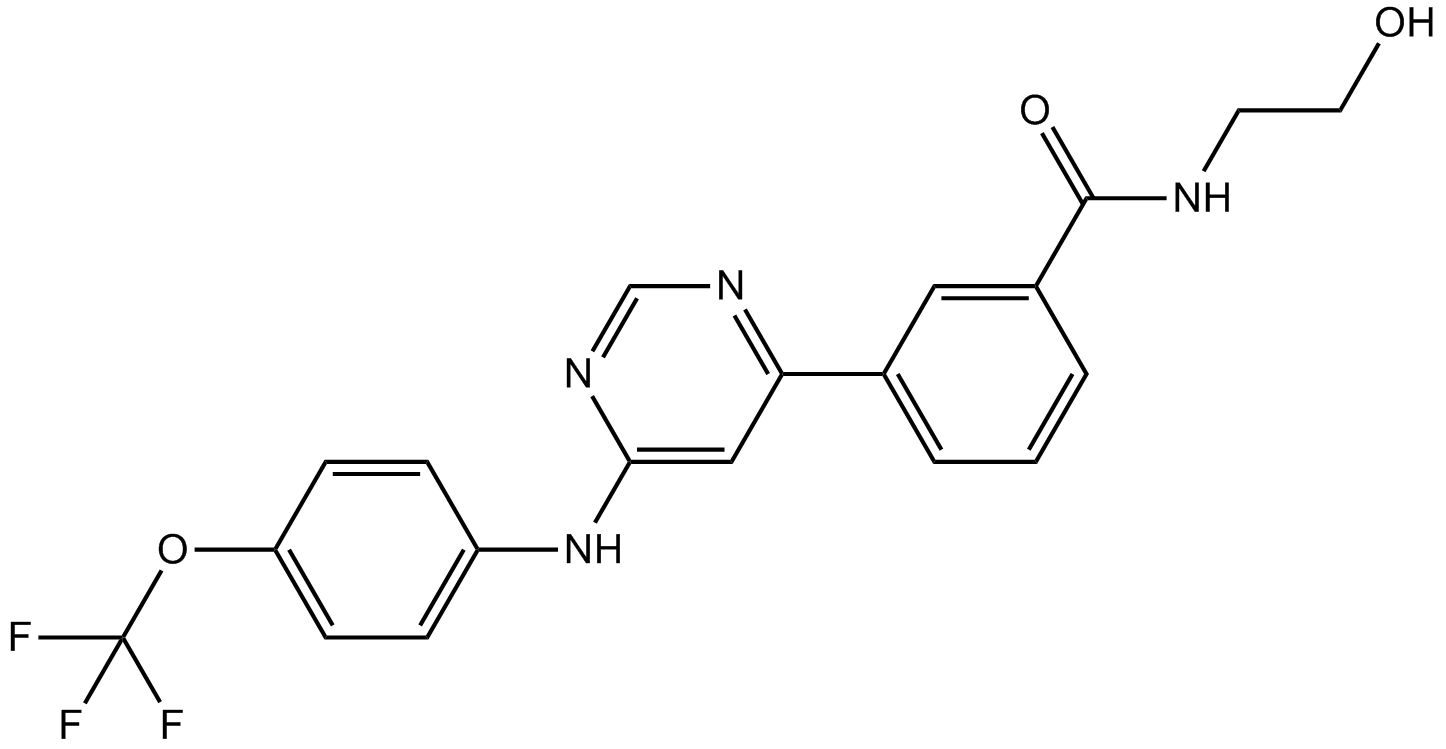
-
GC10607
GNF-7
GNF-7 ist ein Multikinase-Inhibitor. GNF-7 ist ein Bcr-Abl-Inhibitor mit IC50-Werten von 133 nM und 61 nM fÜr Bcr-AblWT bzw. Bcr-AblT315I. GNF-7 besitzt auch eine inhibitorische AktivitÄt sowohl gegen ACK1 (aktivierte CDC42-Kinase 1) als auch GCK (Keimzentrums-Kinase) mit IC50-Werten von 25 nM bzw. 8 nM. GNF-7 kann fÜr die Erforschung hÄmatologischer Malignome verwendet werden.
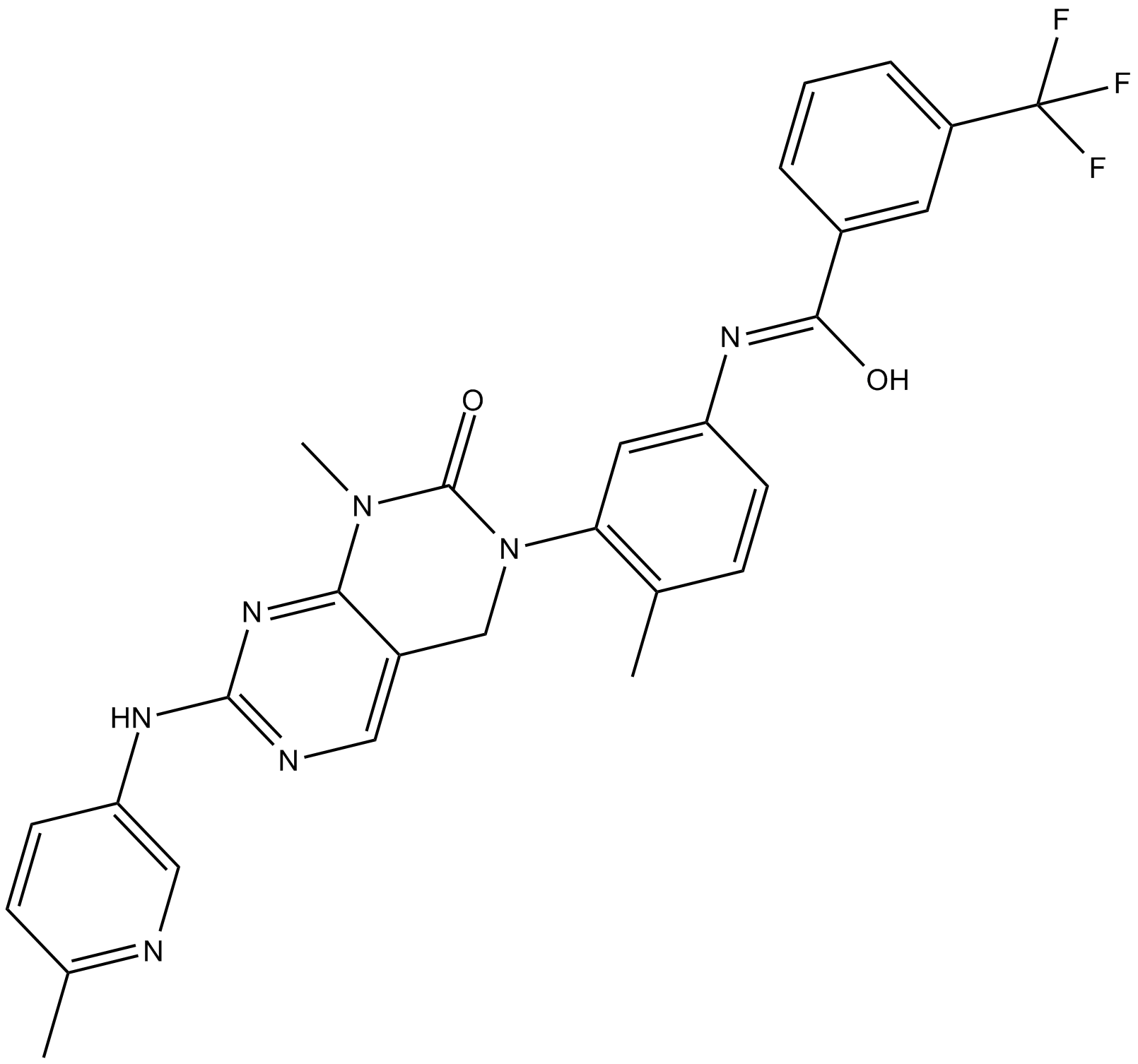
-
GC15564
Go 6976
Go 6769 ist ein Proteinkinase C (PKC)-Inhibitor mit einem IC50-Wert von 20 nM.
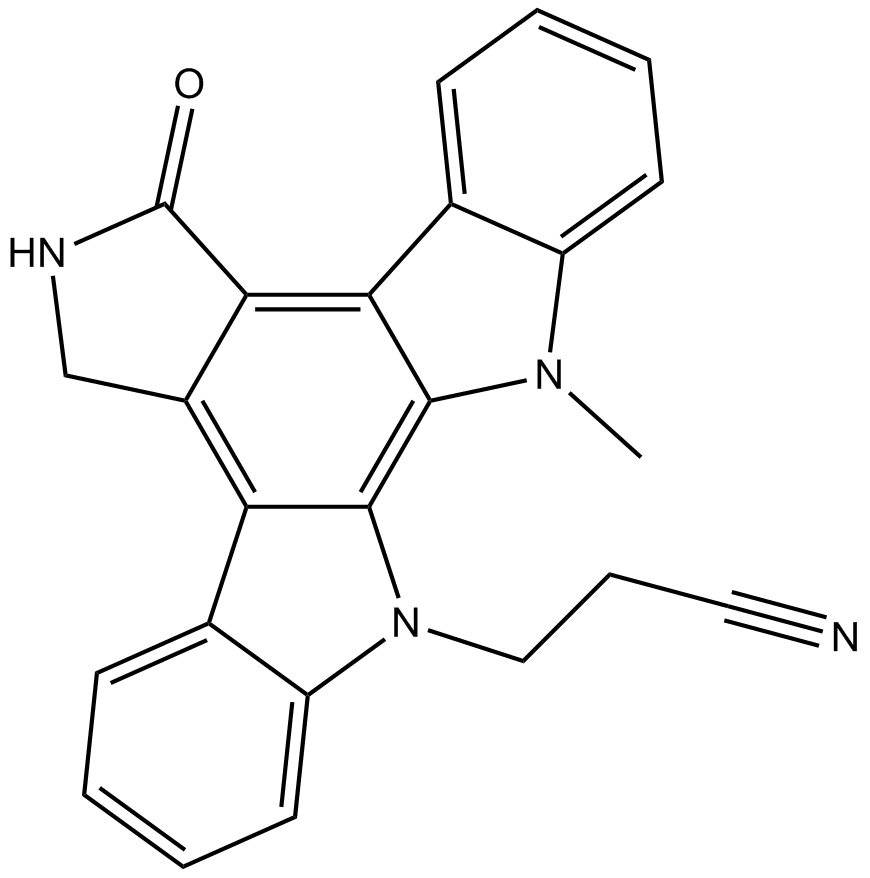
-
GC16907
Go 6983
Go 6983 (GÖ 6983) ist eine der Bisindolylmaleimid-Gruppe von PKC-Inhibitor-Verbindungen. Go 6983 (GÖ 6983) konnte zwischen PKC mu und anderen PKC-Isoenzymen unterscheiden.
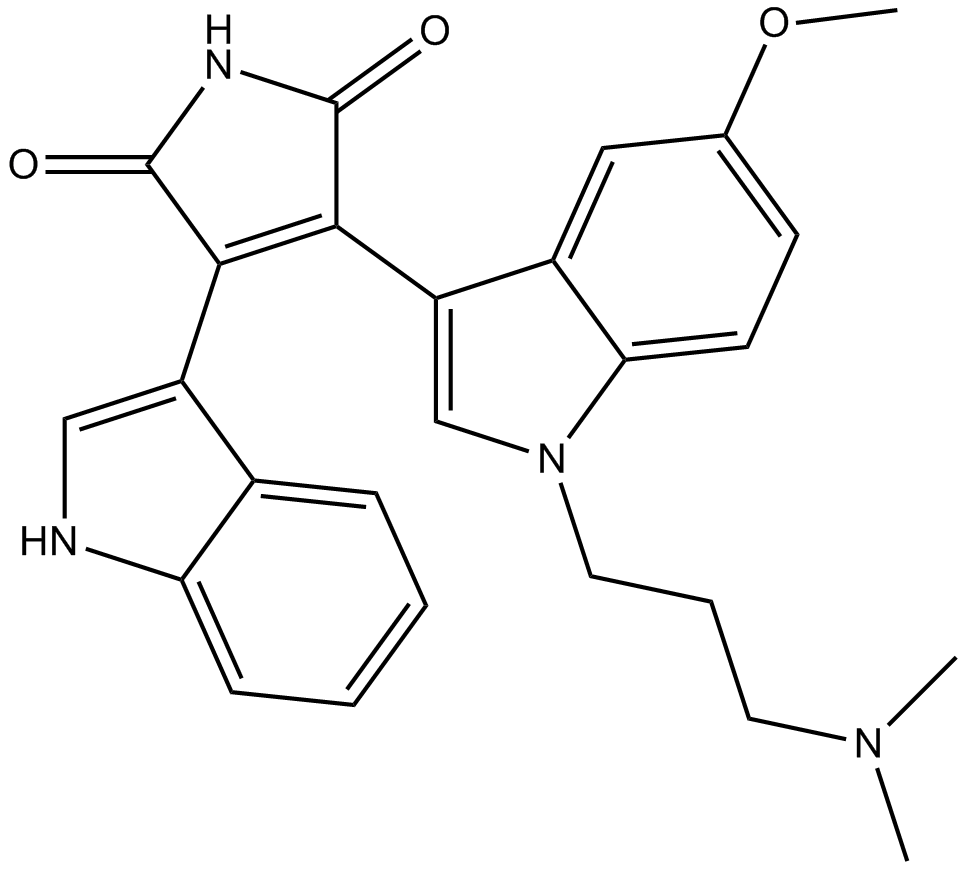
-
GC38791
GSK-25
GSK-25 ist ein potenter, selektiver und oral bioverfÜgbarer ROCK1-Inhibitor (IC50=7 nM).
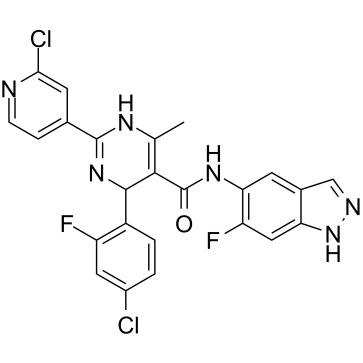
-
GC19177
GSK180736A
GSK180736A ist ein potenter Hemmer der Rho-assoziierten Coiled-Coil-Kinase 1 (ROCK1) mit einem IC50 von 100 nM.
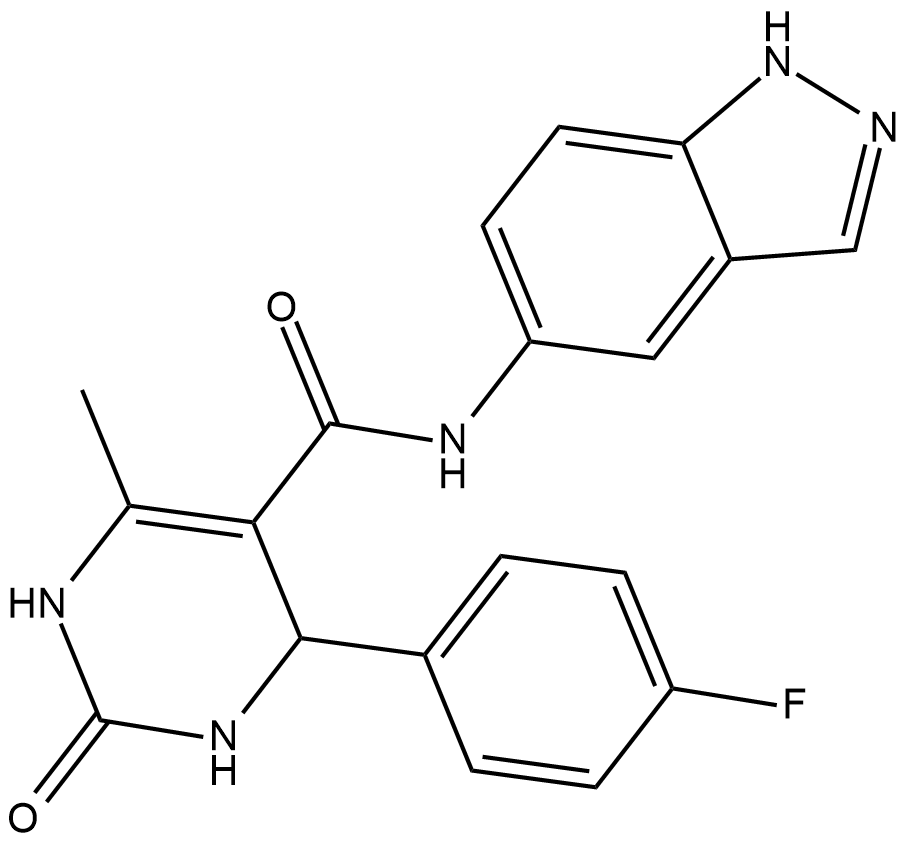
-
GC17936
GSK269962A
GSK269962A (GSK 269962) ist ein potenter ROCK-Inhibitor mit IC50-Werten von 1,6 und 4 nM fÜr rekombinantes humanes ROCK1 bzw. ROCK2.
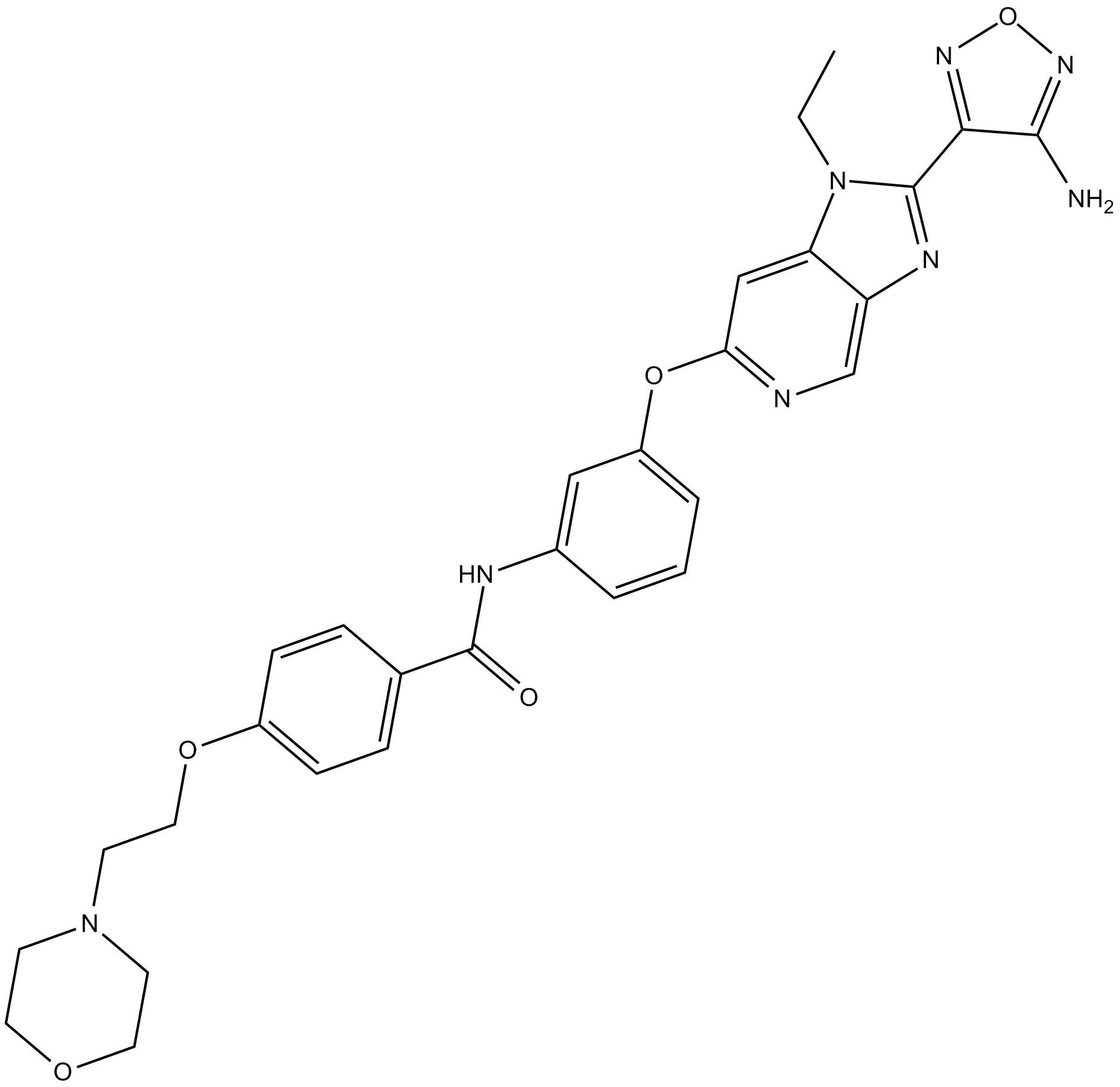
-
GC25482
GSK269962A HCl
GSK269962A HCl (GSK269962B, GSK269962) is a selective ROCK(Rho-associated protein kinase) inhibitor with IC50 values of 1.6 and 4 nM for ROCK1 and ROCK2, respectively.
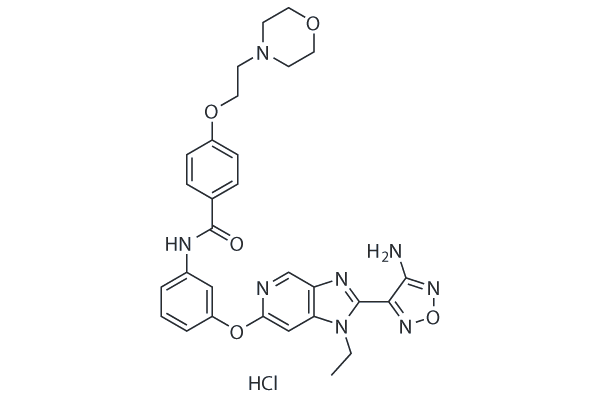
-
GC18119
GSK429286A
GSK429286A ist ein selektiver Inhibitor von ROCK1 mit einem IC50-Wert von 14 nM.
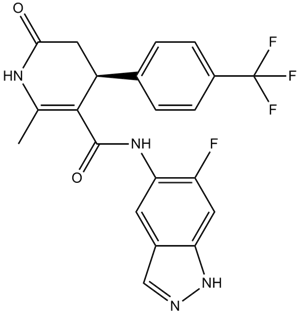
-
GC11878
GW788388
GW788388 ist ein potenter und selektiver Inhibitor von ALK5 mit einem IC50 von 18 nM und hemmt auch die AktivitÄten des TGF-β-Typ-II-Rezeptors und des Activin-Typ-II-Rezeptors, ohne den BMP-Typ-II-Rezeptor zu hemmen.
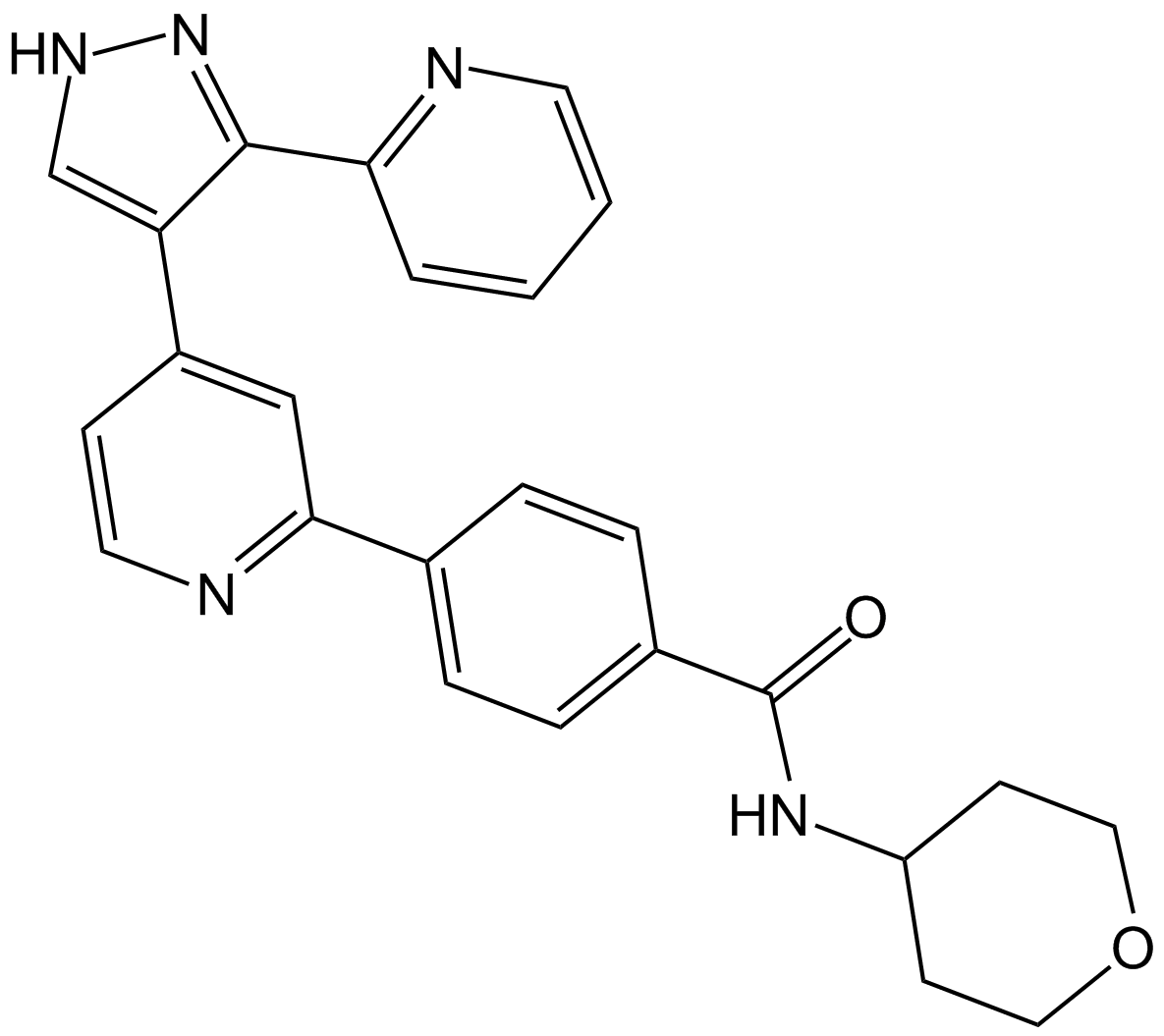
-
GC10915
GZD824
Olverembatinib (GZD824)-Dimesylat ist ein potenter und oral aktiver pan-Bcr-Abl-Inhibitor. GZD824 hemmt wirksam ein breites Spektrum von Bcr-Abl-Mutanten. GZD824 hemmt natives Bcr-Abl und Bcr-AblT315I stark mit IC50-Werten von 0,34 nM bzw. 0,68 nM. GZD824 hat AntitumoraktivitÄt.
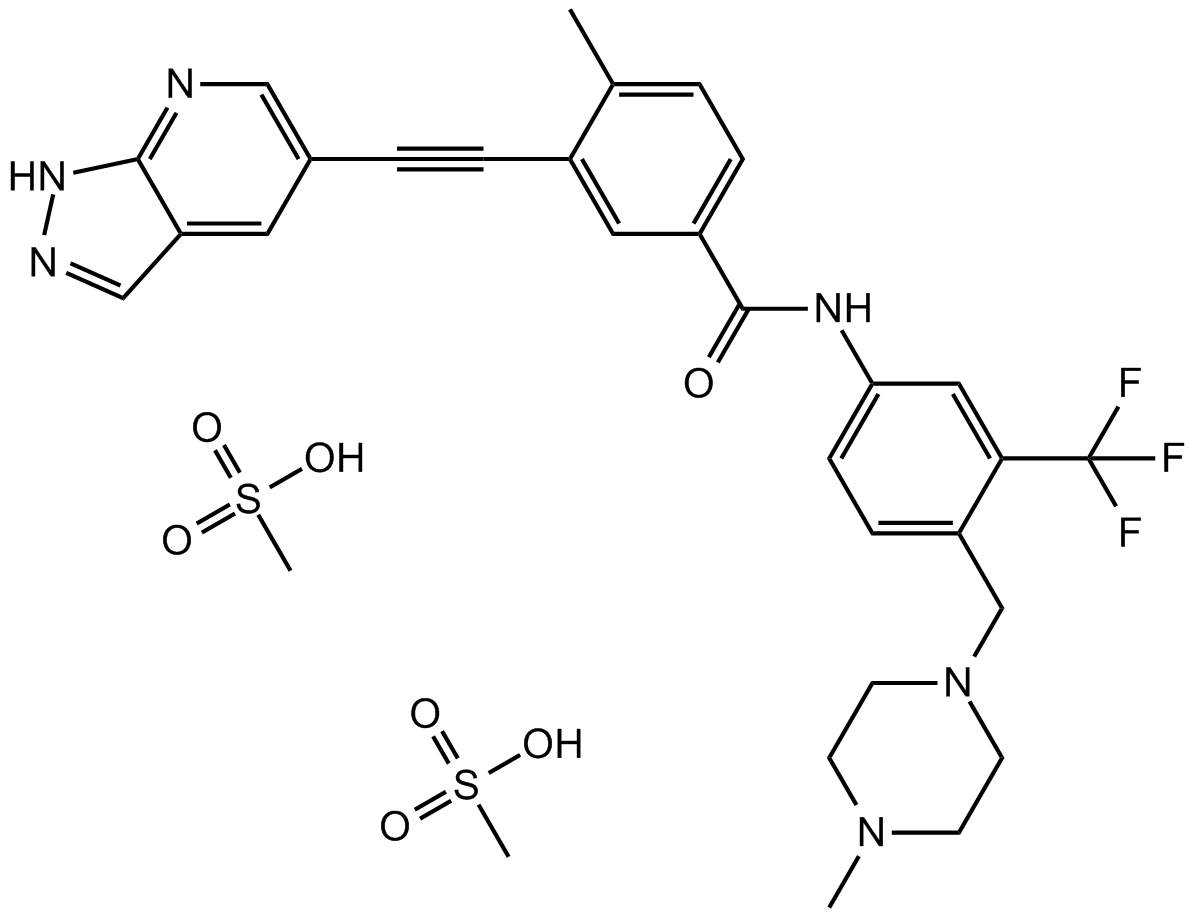
-
GC33201
GZD856
GZD856 AmeisensÄure ist ein potenter und oral aktiver PDGFRα/β-Inhibitor mit IC50-Werten von 68,6 bzw. 136,6 nM. GZD856 AmeisensÄure ist auch ein Bcr-AblT315I-Inhibitor mit IC50-Werten von 19,9 und 15,4nM fÜr natives Bcr-Abl und die T315I-Mutante. GZD856 AmeisensÄure hat AntitumoraktivitÄt.
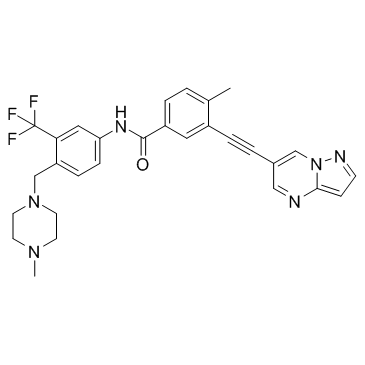
-
GC36207
H-1152
H-1152 ist ein membrandurchlÄssiger und selektiver ROCK-Inhibitor mit einem Ki-Wert von 1,6 nM und einem IC50-Wert von 12 nM fÜr ROCK2.
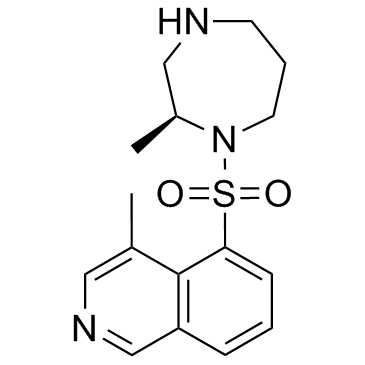
-
GC36208
H-1152 dihydrochloride
H-1152-Dihydrochlorid ist ein membrangÄngiger und selektiver ROCK-Inhibitor mit einem Ki-Wert von 1,6 nM und einem IC50-Wert von 12 nM fÜr ROCK2.
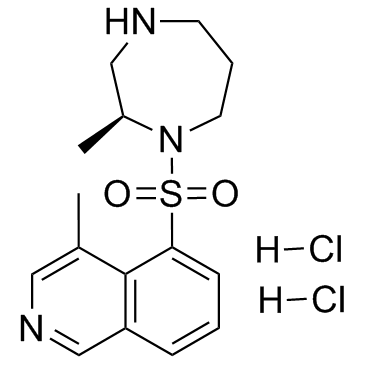
-
GC31650
Halofuginone (RU-19110)
Halofuginon (RU-19110) (RU-19110), ein Febrifugin-Derivat, ist ein kompetitiver Prolyl-tRNA-Synthetase-Inhibitor mit einem Ki von 18,3 nM.
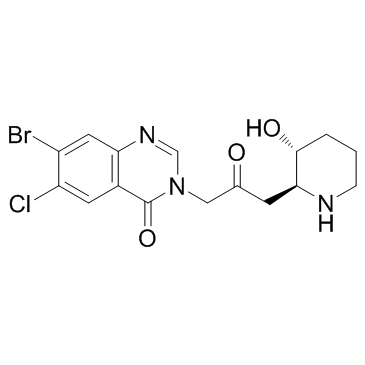
-
GC31950
Halofuginone hydrobromide (RU-19110 (hydrobromide))
Halofuginon (RU-19110) Hydrobromid, ein Febrifugin-Derivat, ist ein kompetitiver Prolyl-tRNA-Synthetase-Inhibitor mit einem Ki von 18,3 nM.
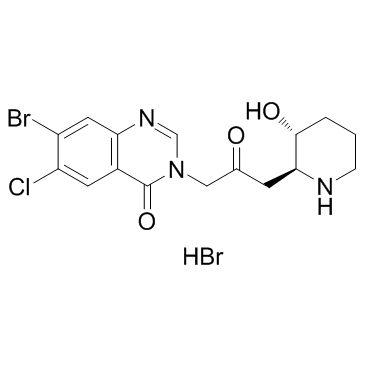
-
GC10299
Hexadecyl Methyl Glycerol
protein kinase C activity inhibitor
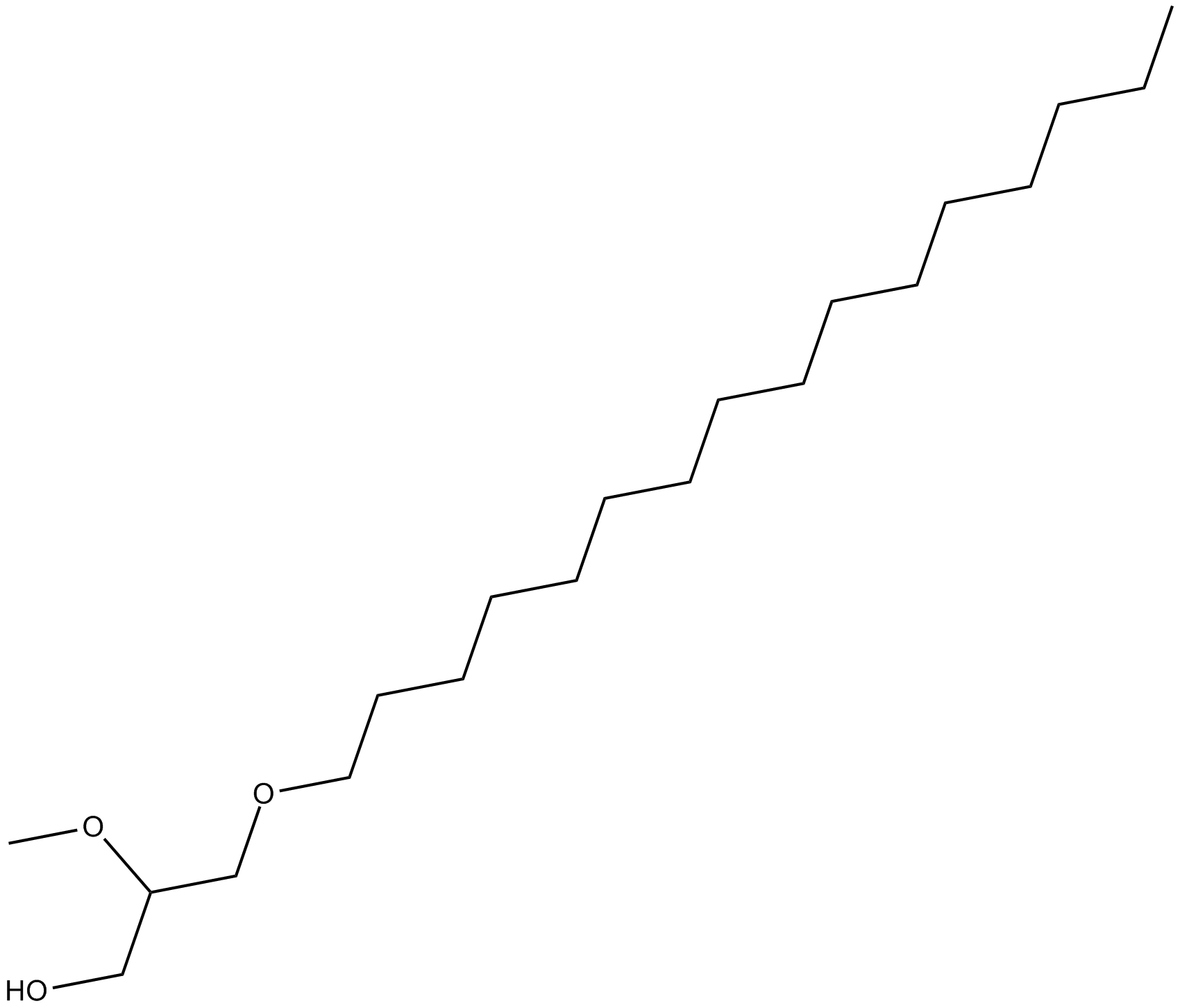
-
GC15018
Hispidin
Hispidin, ein PKC-Hemmer und eine phenolische Verbindung aus Phellinus linteus, besitzt nachweislich starke antioxidative, krebshemmende, antidiabetische und antidementÖse Eigenschaften.
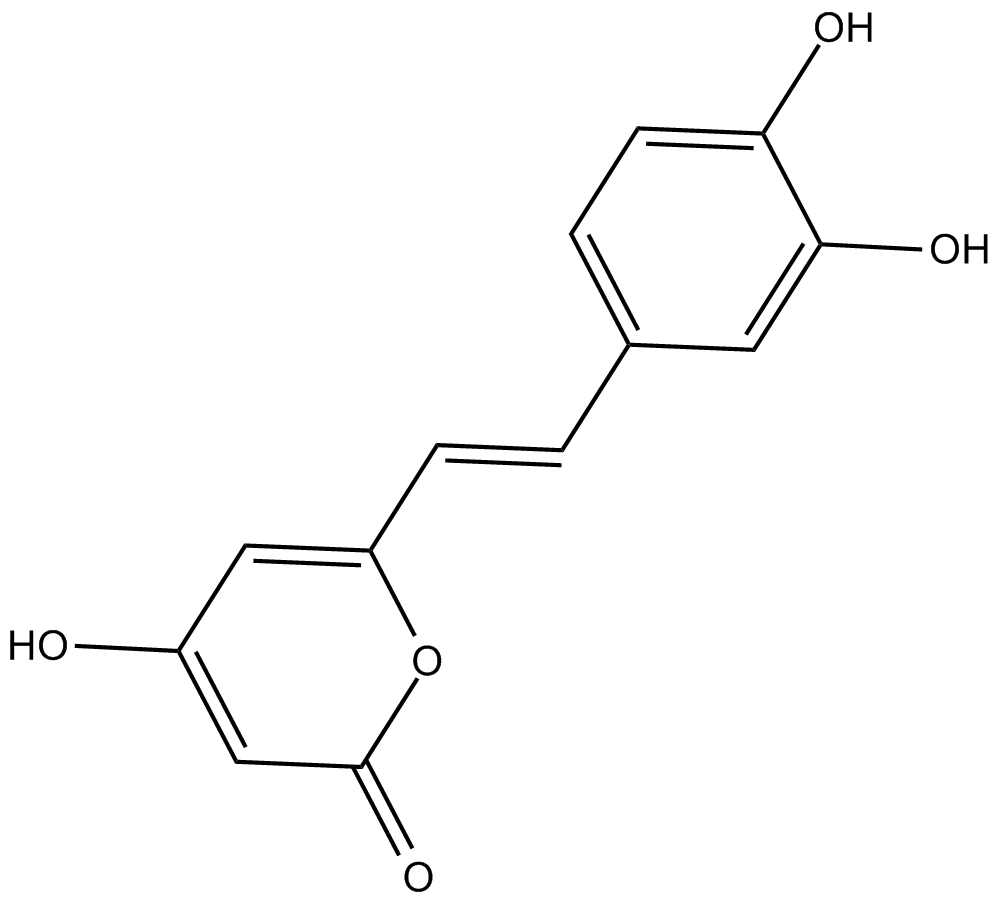
-
GC64326
Hydrochlorothiazid-d2
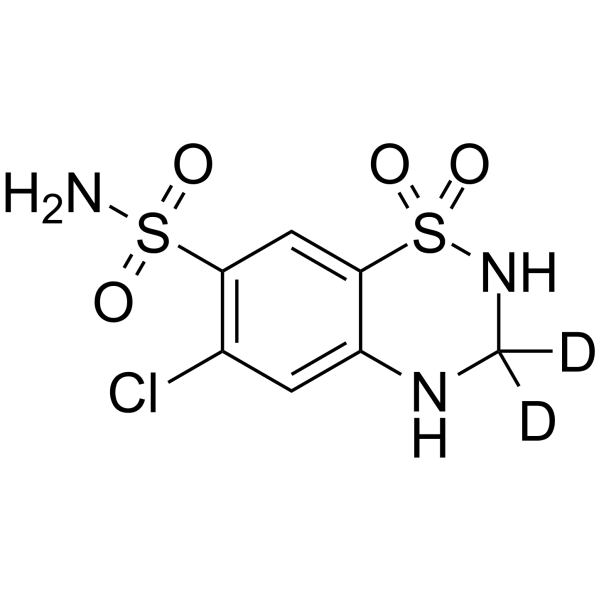
-
GC17523
Hydrochlorothiazide
Hydrochlorothiazid (HCTZ), ein oral wirksames Diuretikum aus der Klasse der Thiazide, hemmt den transformierenden TGF-β/Smad-Signalweg.
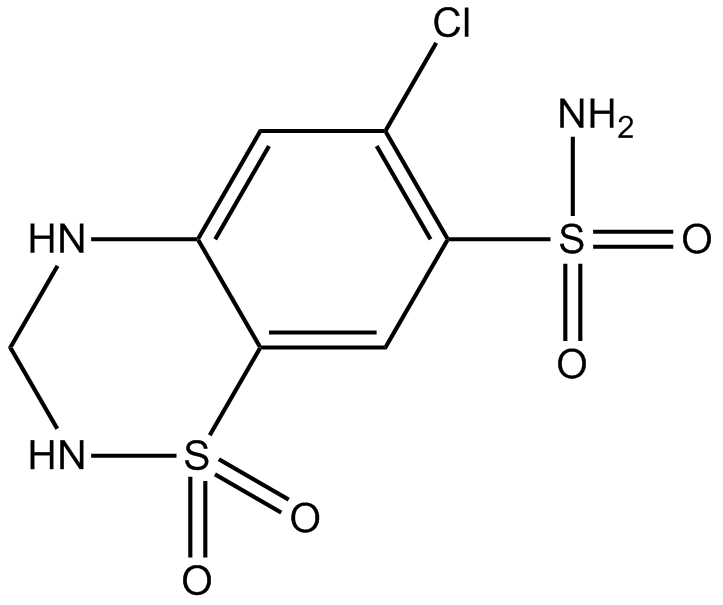
-
GC36282
Hypocrellin A
Hypocrellin A, ein natÜrlich vorkommender PKC-Inhibitor, hat viele biologische und pharmakologische Eigenschaften, wie Antitumor-, antivirale, antibakterielle und Antileishmania-AktivitÄten.
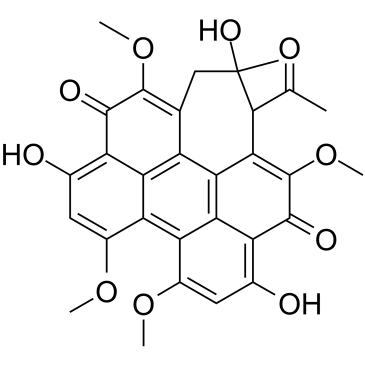
-
GC15420
ICP 103
Protein kinase inhibitor
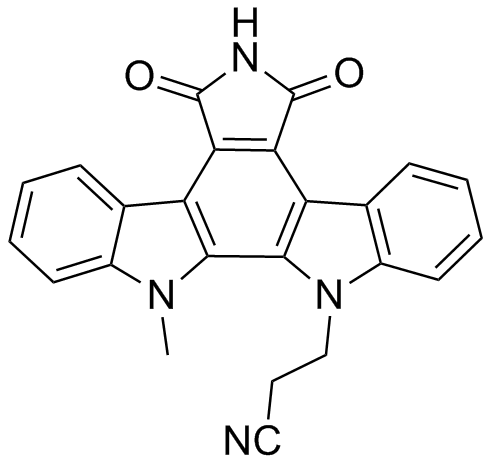
-
GC10314
Imatinib (STI571)
Imatinib (STI571) (STI571) ist ein oral bioverfÜgbarer Tyrosinkinase-Inhibitor, der selektiv die BCR/ABL-, v-Abl-, PDGFR- und c-kit-Kinase-AktivitÄt hemmt. Imatinib (STI571) (STI571) wirkt, indem es nahe an die ATP-Bindungsstelle bindet, es in einer geschlossenen oder selbsthemmenden Konformation fixiert und dadurch die EnzymaktivitÄt des Proteins semikompetitiv hemmt. Imatinib (STI571) ist auch ein Inhibitor von SARS-CoV und MERS-CoV.
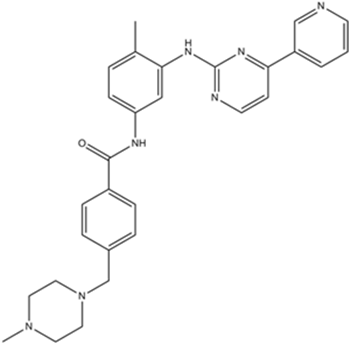
-
GC11759
Imatinib Mesylate (STI571)
Imatinib-Mesylat (STI571) (STI571-Mesylat) ist ein Tyrosinkinase-Inhibitor, der die Tyrosinkinasen c-Kit, Bcr-Abl und PDGFR (IC50=100 nM) hemmt.
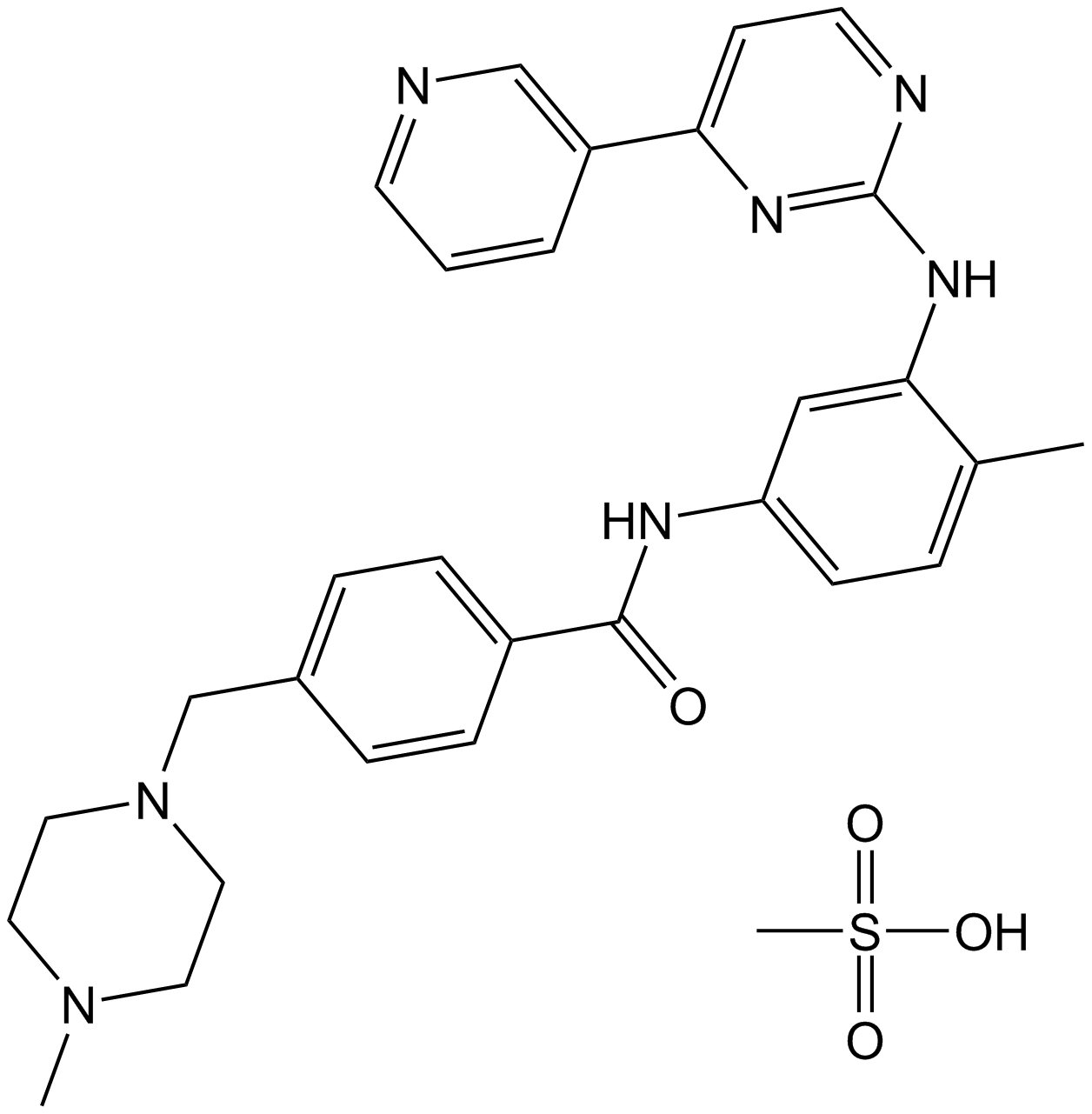
-
GC50317
IN 1130
IN 1130 ist ein hochselektiver Inhibitor der transformierenden Wachstumsfaktor-β-Typ-I-Rezeptorkinase (ALK5) mit einem IC50-Wert von 5,3 nM für die ALK5-vermittelte Smad3-Phosphorylierung.
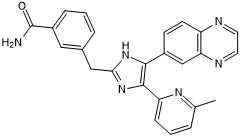
-
GC32870
Ingenol ((-)-Ingenol)
Ingenol ((-)-Ingenol) ist ein PKC-Aktivator mit einem Ki von 30 μM mit AntitumoraktivitÄt.
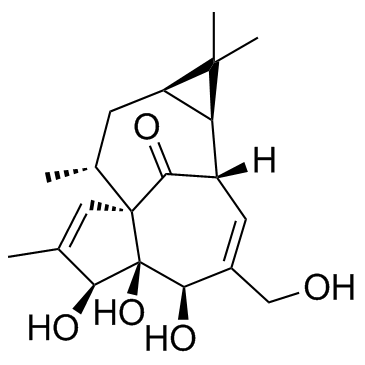
-
GC61776
Ingenol 3,20-dibenzoate
Ingenol 3,20-Dibenzoat ist ein potenter Isoform-selektiver Agonist fÜr Proteinkinase C (PKC).

-
GC31656
Ingenol Mebutate (Ingenol 3-angelate)
Ingenol Mebutate (Ingenol 3-Angelate) ist ein Wirkstoff in Euphorbia peplus, wirkt als starker PKC-Modulator mit Kis-Werten von 0,3, 0,105, 0,162, 0,376 und 0,171 nM fÜr PKC-⋱, PKC-β, PKC-β γ, PKC-&7#948; bzw. PKC-ε und hat entzÜndungshemmende und AntitumoraktivitÄt.
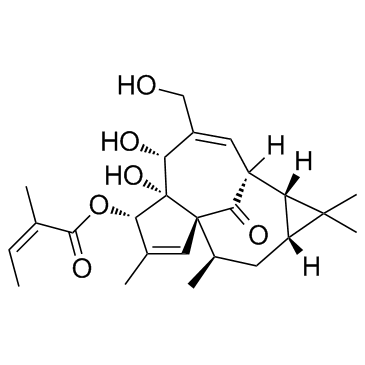
-
GC15148
Ionomycin calcium salt
Lonomycin ist ein selektiver Calcium-Ionophor, der aus S. conglobatus gewonnen wird und intrazelluläre Calciumspeicher mobilisiert.
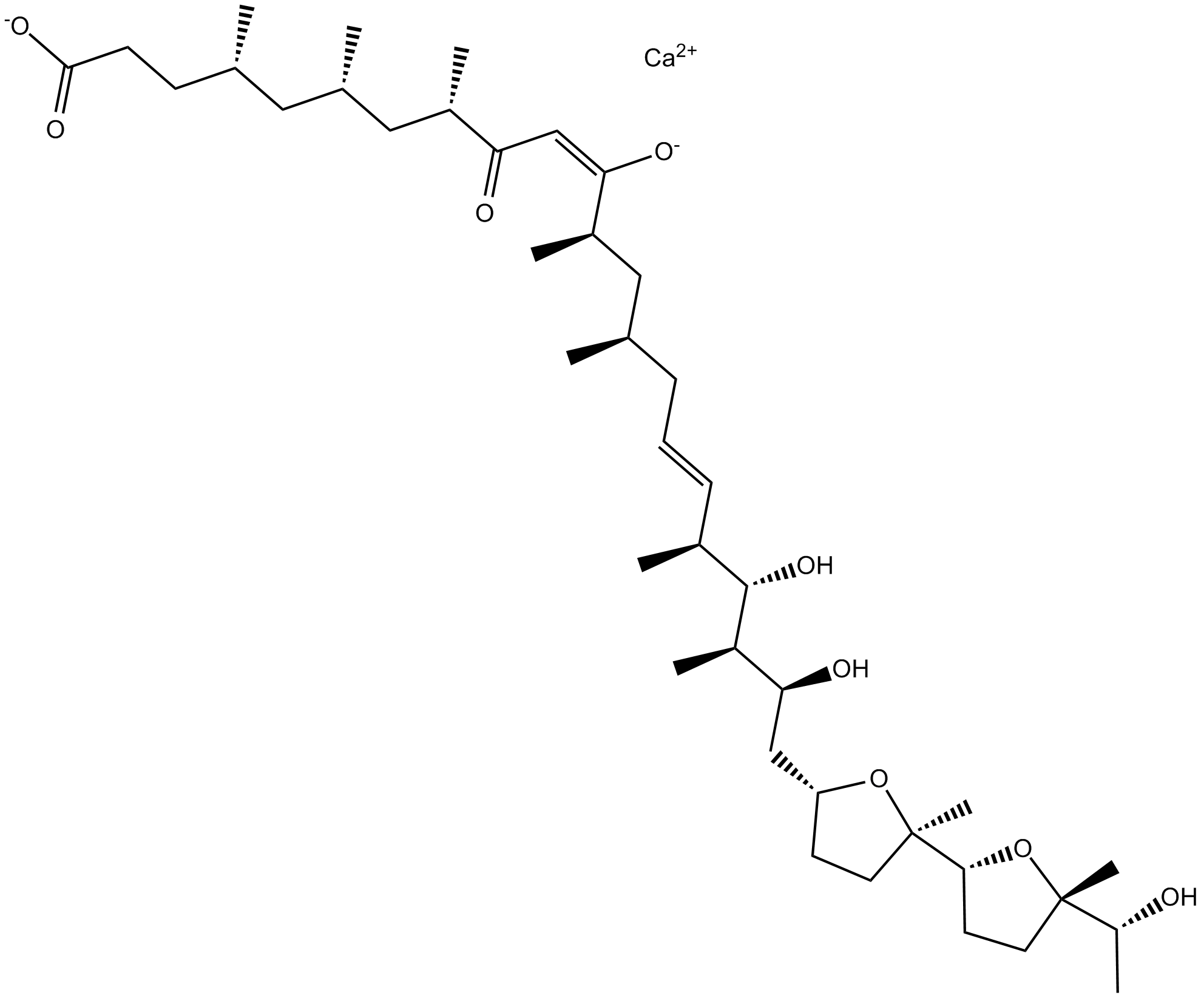
-
GC15446
Ionomycin free acid
Ionomycin-Freisäure (SQ23377) ist ein potentes, selektives Calcium-Ionophor und ein Antibiotikum, das von Streptomyces conglobatus produziert wird.
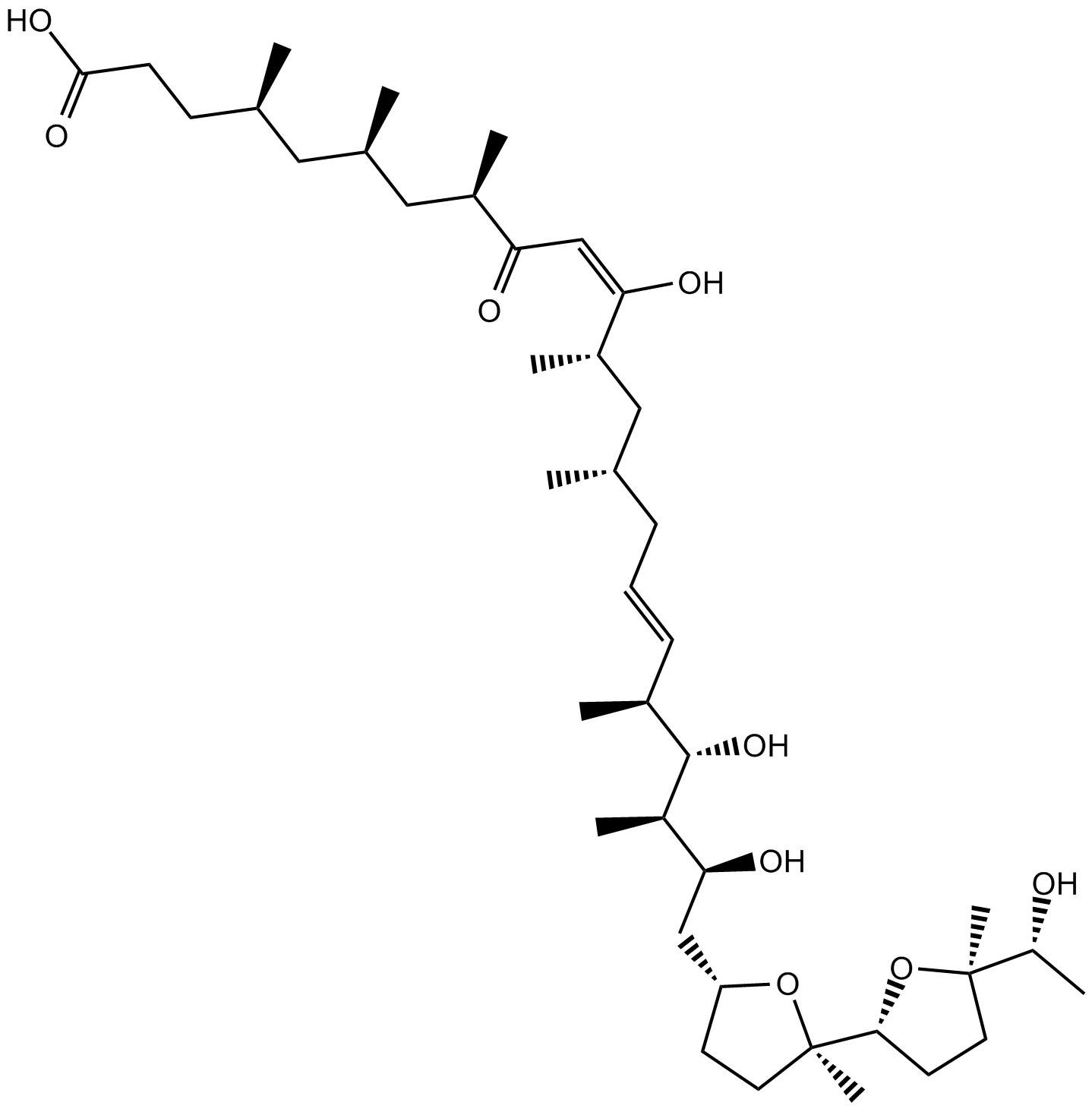
-
GC60210
Isosaponarin
Isosaponarin ist ein aus WasabiblÄttern isoliertes Flavonglykosid.
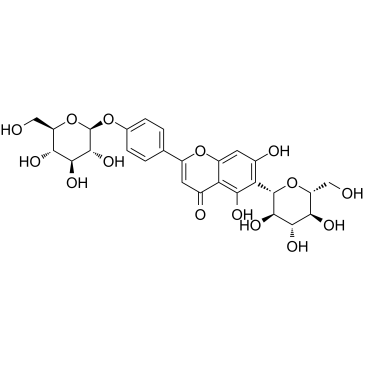
-
GC12108
ITD 1
ITD 1 ist der erste selektive TGFβ-Rezeptor-Inhibitor mit einem IC50 von 460 nM.
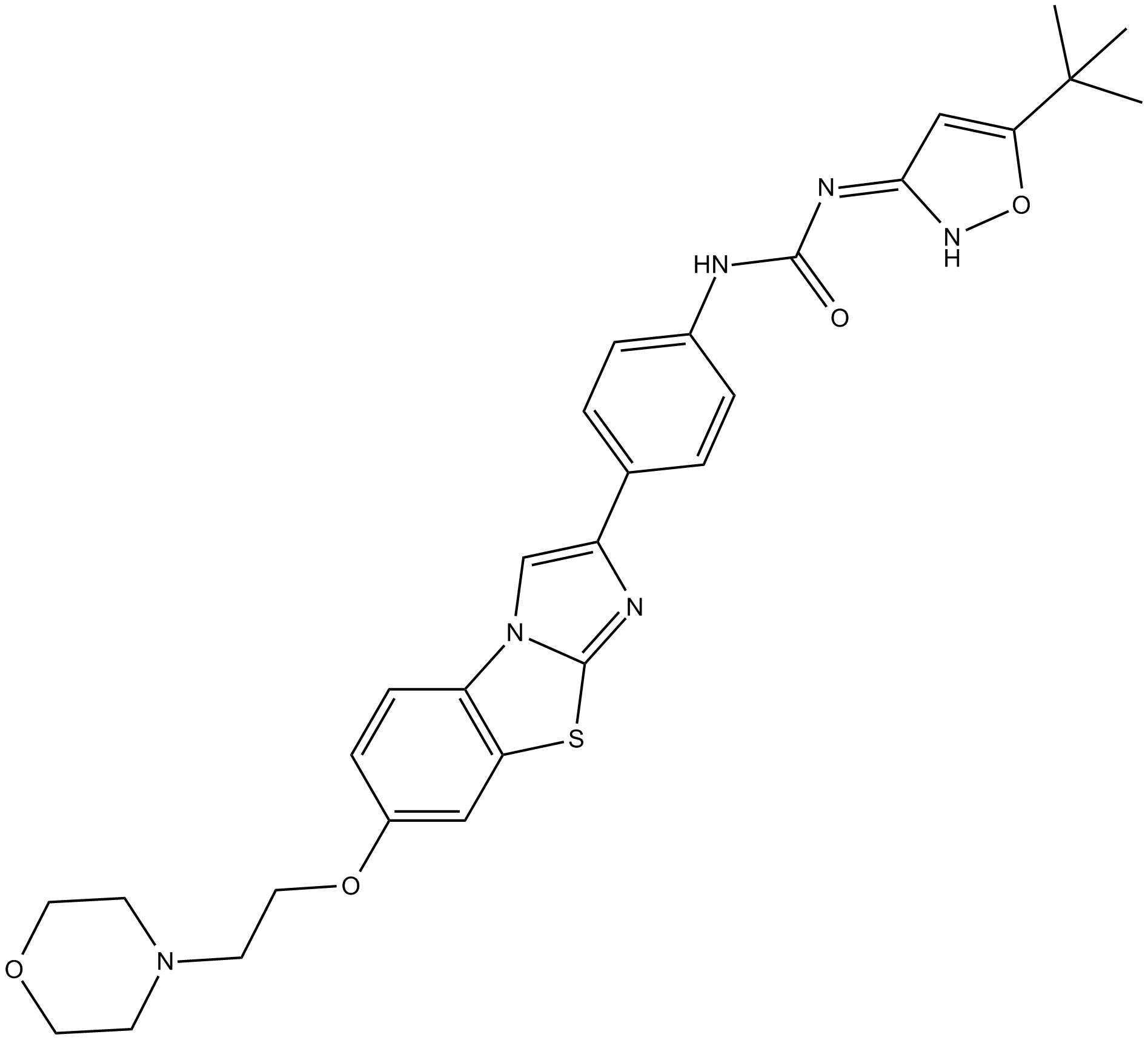
-
GC11362
K 252a
Ein Protein-Kinase-Inhibitor
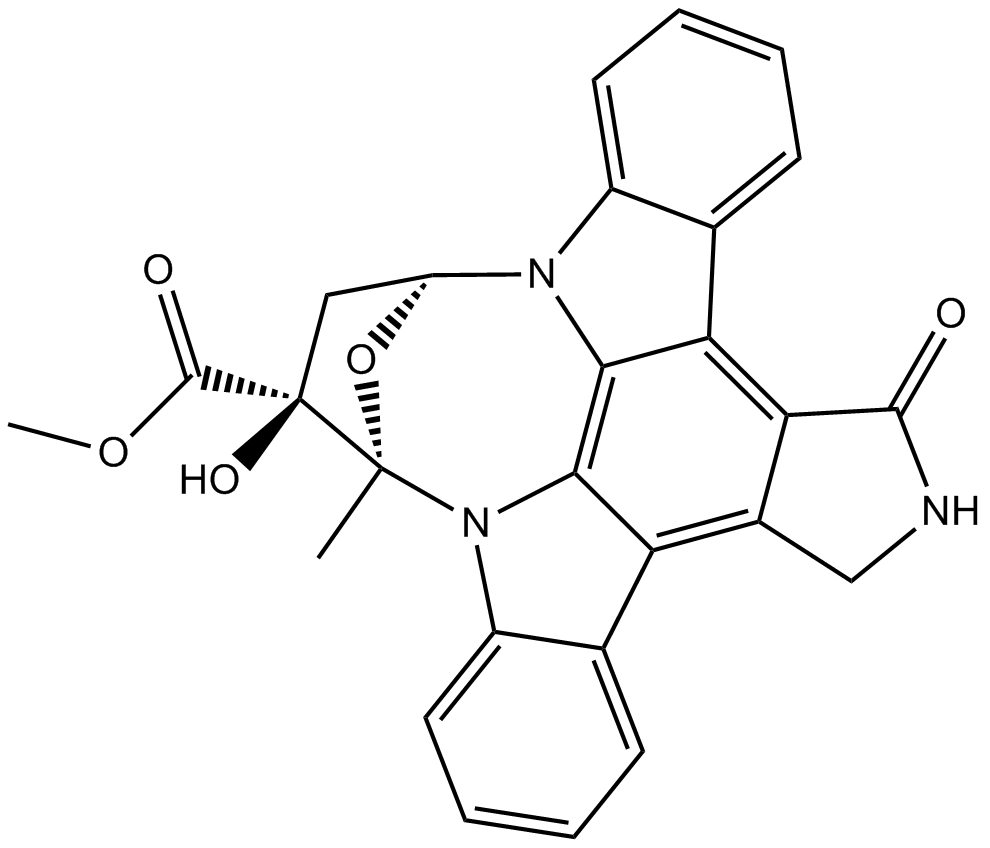
-
GC15281
K-252c
K-252c, ein Staurosporin-Analogon, isoliert aus Nocardiopsis sp.
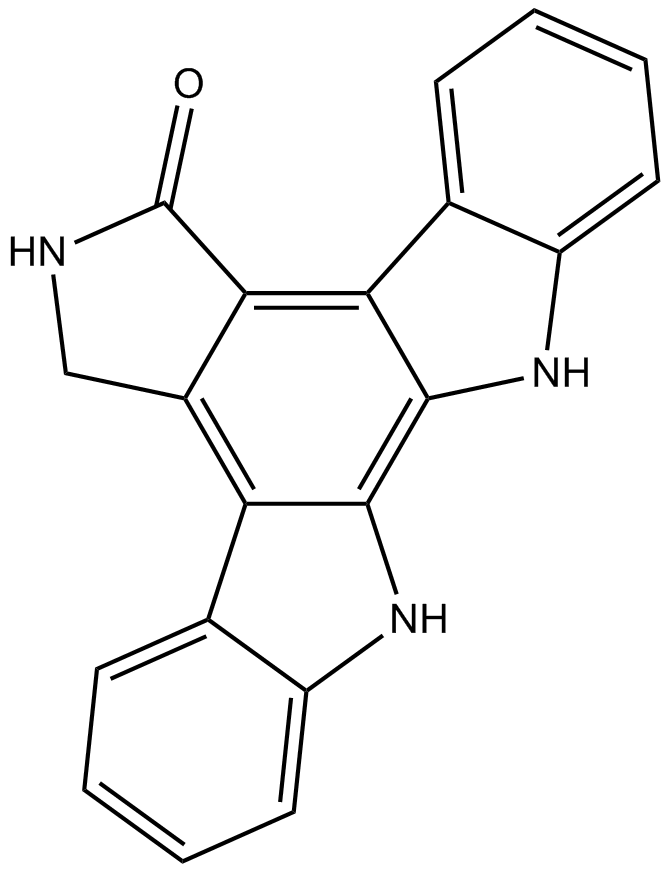
-
GC15567
K02288
K02288 ist ein potenter Inhibitor des Typ-I-Rezeptors des knochenmorphogenetischen Proteins (BMP) mit IC50-Werten von 1,8, 1,1, 6,4 nM fÜr ALK1, ALK2 bzw. ALK6.
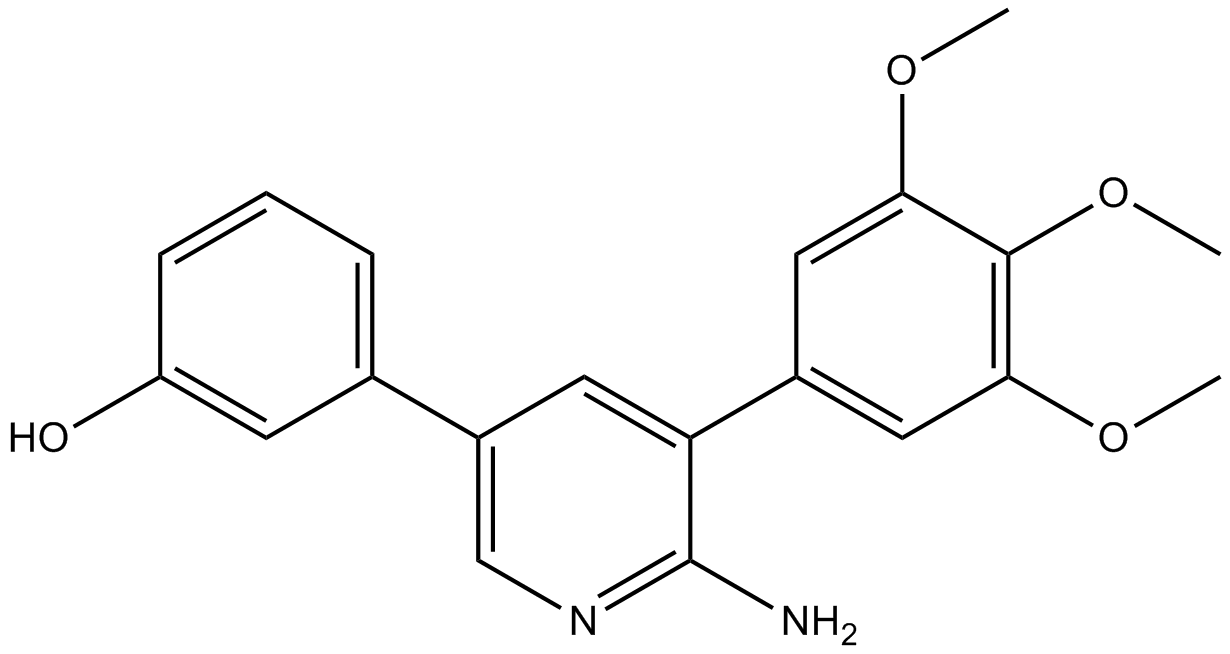
-
GC43993
K252b
K252b, ein aus dem Actinomyceten Nocardiopsis isoliertes Indolocarbazol, ist ein PKC-Inhibitor.

-
GC15057
Kartogenin
Kartogenin (KGN) ist ein Induktor der Differenzierung humaner mesenchymaler Stammzellen zu Chondrozyten mit einem EC50-Wert von 100 nM.
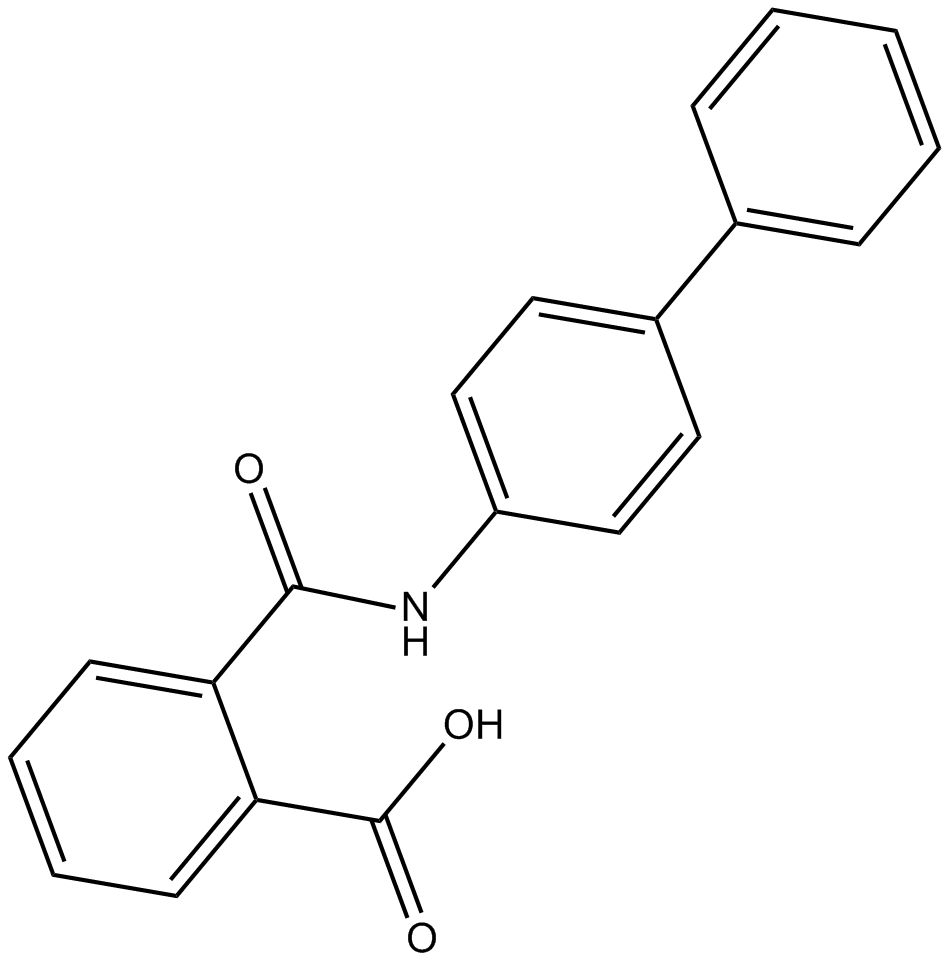
-
GC64263
Kobophenol A
Kobophenol A, ein oligomeres Stilben, blockiert die Interaktion zwischen dem ACE2-Rezeptor und S1-RBD mit einem IC50 von 1,81 μM und hemmt die SARS-CoV-2-Virusinfektion in Zellen mit einem EC50 von 71,6 μM.
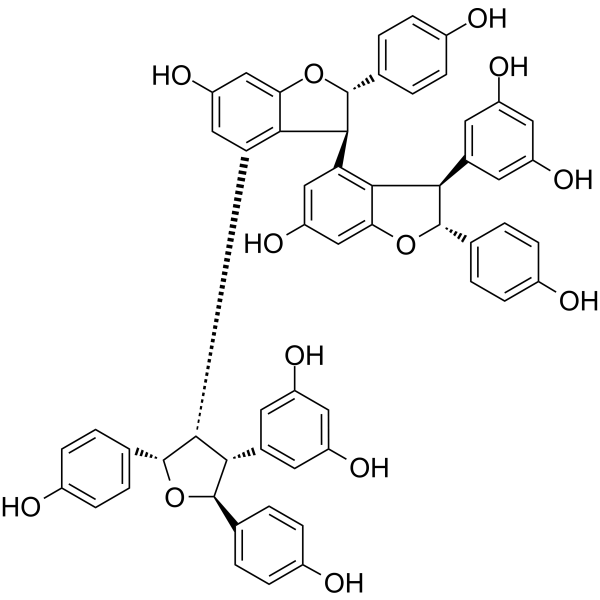
-
GC17346
KT 5823
KT 5823, ein selektiver Inhibitor der cGMP-abhängigen Proteinkinase (PKG) mit einem Ki-Wert von 0,23 μM, hemmt auch PKA und PKC mit Ki-Werten von 10 μM bzw. 4 μM.
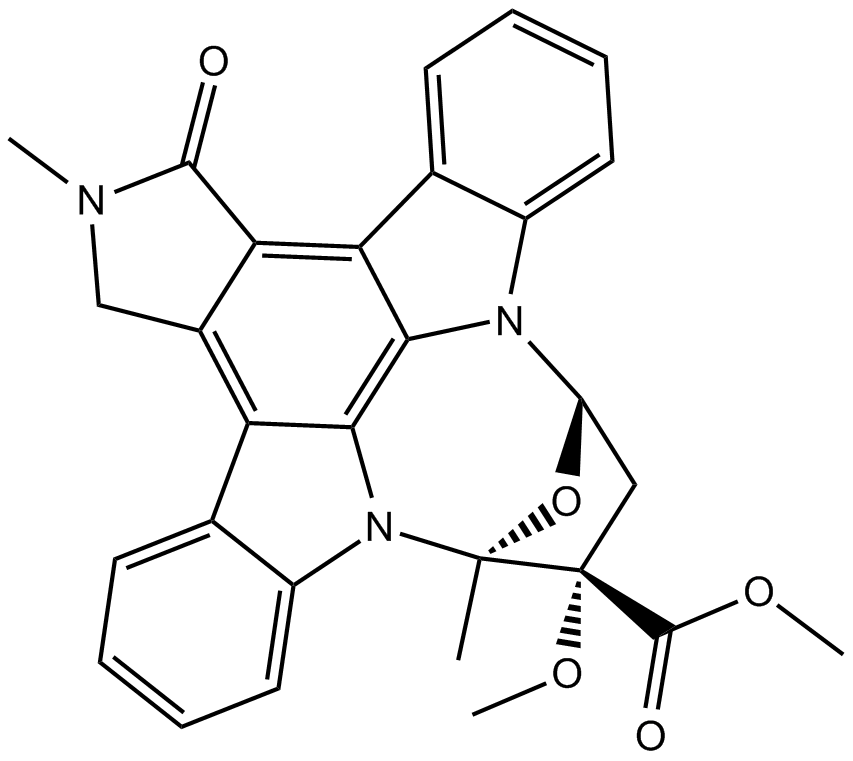
-
GC12817
K–115 hydrochloride dihydrate
K-115-Hydrochlorid-Dihydrat (K-115) ist ein spezifischer Inhibitor von ROCK mit IC50-Werten von 19 und 51 nM fÜr ROCK2 bzw. ROCK1.
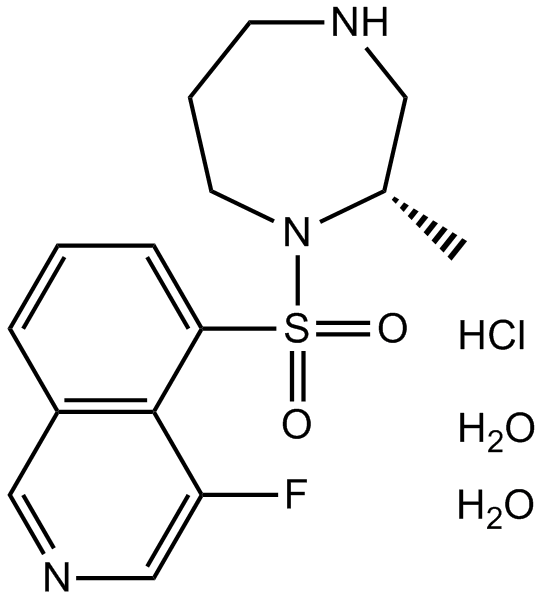
-
GC40770
L-erythro Sphingosine (d18:1)
L-erythro Sphingosine is a synthetic stereoisomer of sphingosine (d18:1).

-
GC17815
L-threo-Sphingosine C-18
L-threo-Sphingosin C-18 ist ein potenter MAPK-Inhibitor. L-threo-Sphingosin C-18 induziert Apoptose und klare DNA-Fragmentierung. L-threo-Sphingosin C-18 zeigt Antikrebswirkung.
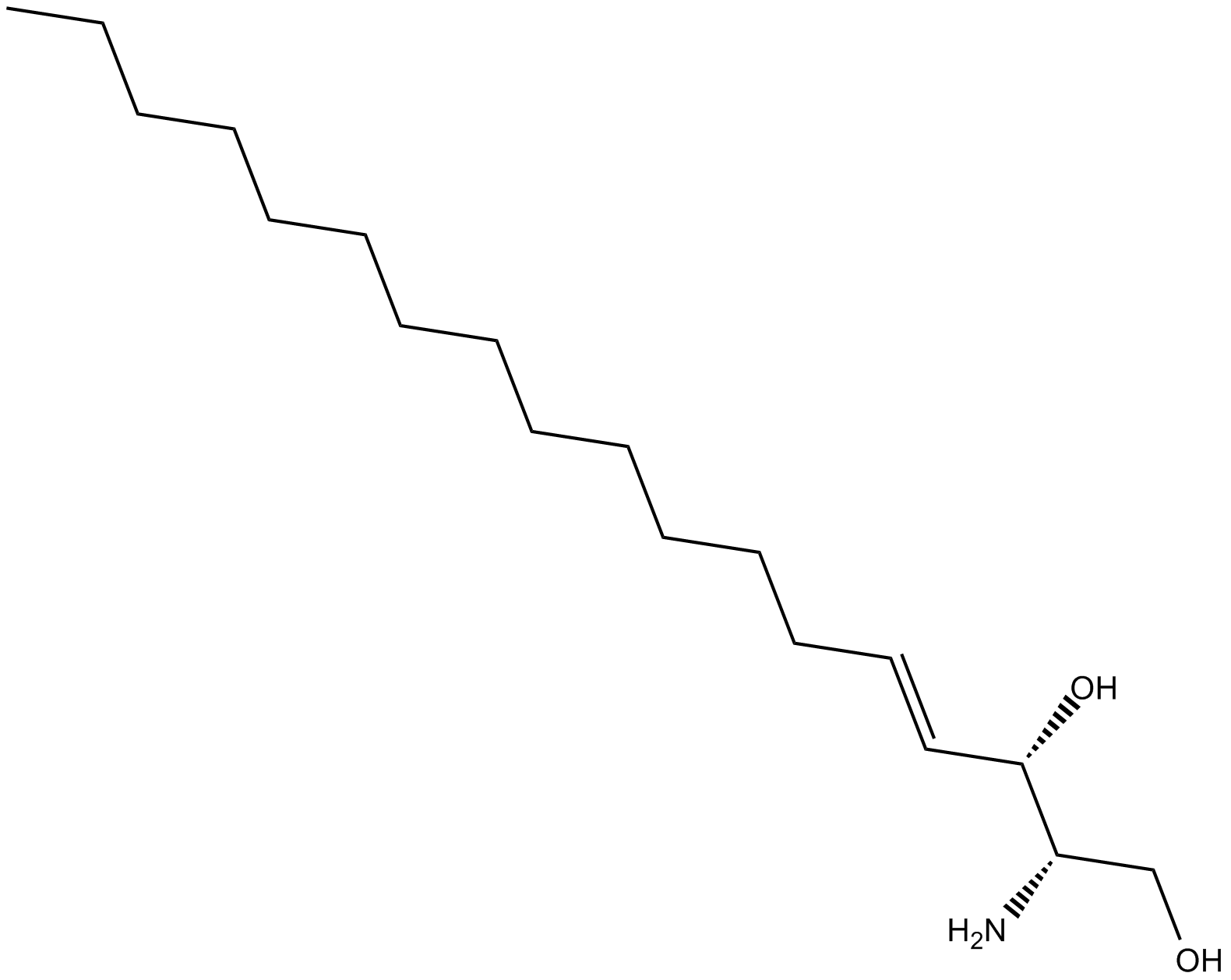
-
GC16580
LDN-193189
ALK-Inhibitor, potent und selektiv
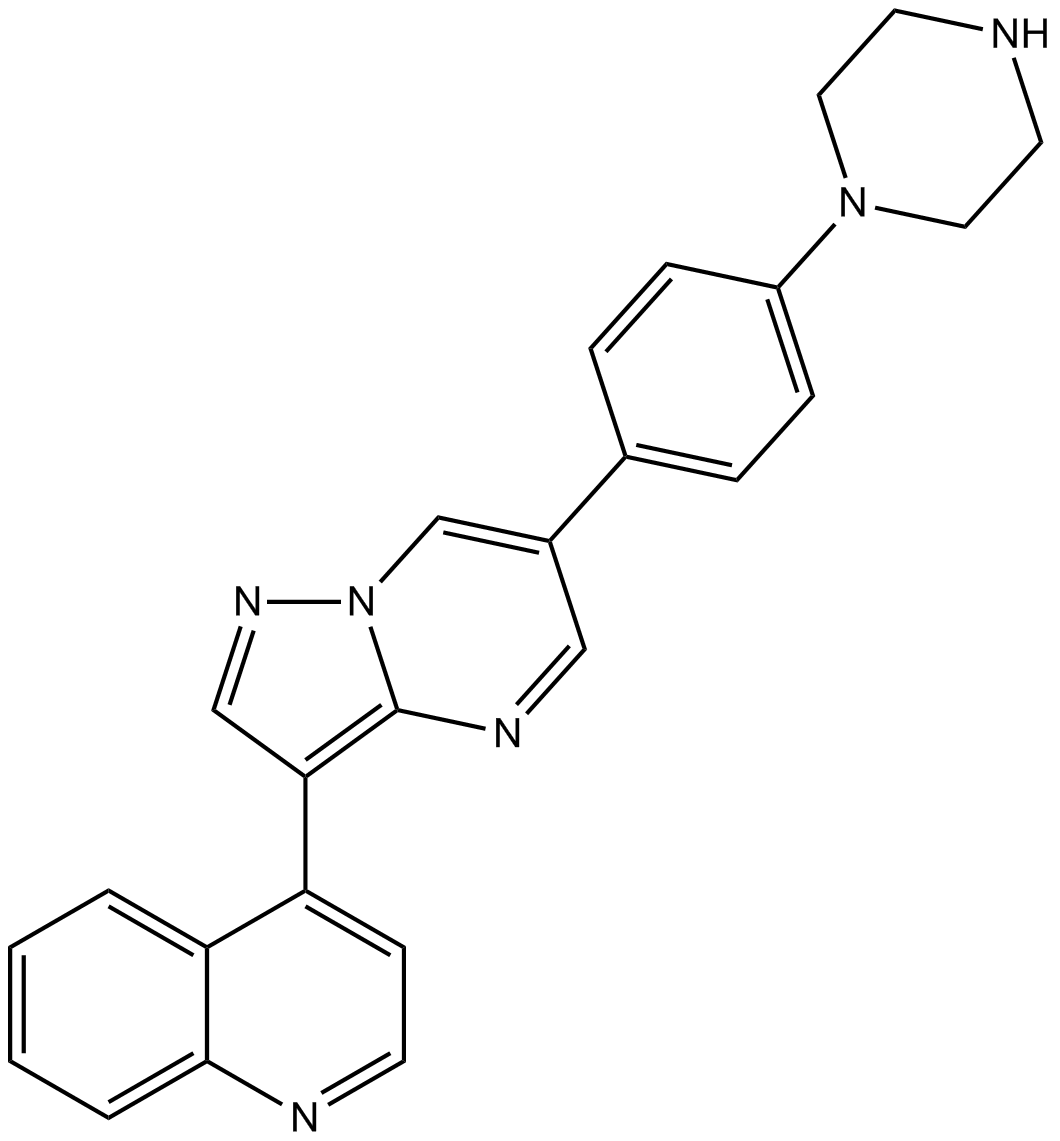
-
GC17035
LDN-212854
LDN-212854 ist ein Inhibitor des knochenmorphogenetischen Proteins (BMP), der ALK2 stark hemmt (IC50: 1,3 nM). LDN-212854 hemmt auch ALK1 (IC50: 2,40 nM). LDN-212854 kann bei der Erforschung von Fibrodysplasia ossificans progressive und Krebsarten wie hepatozellulÄrem Karzinom (HCC) verwendet werden.
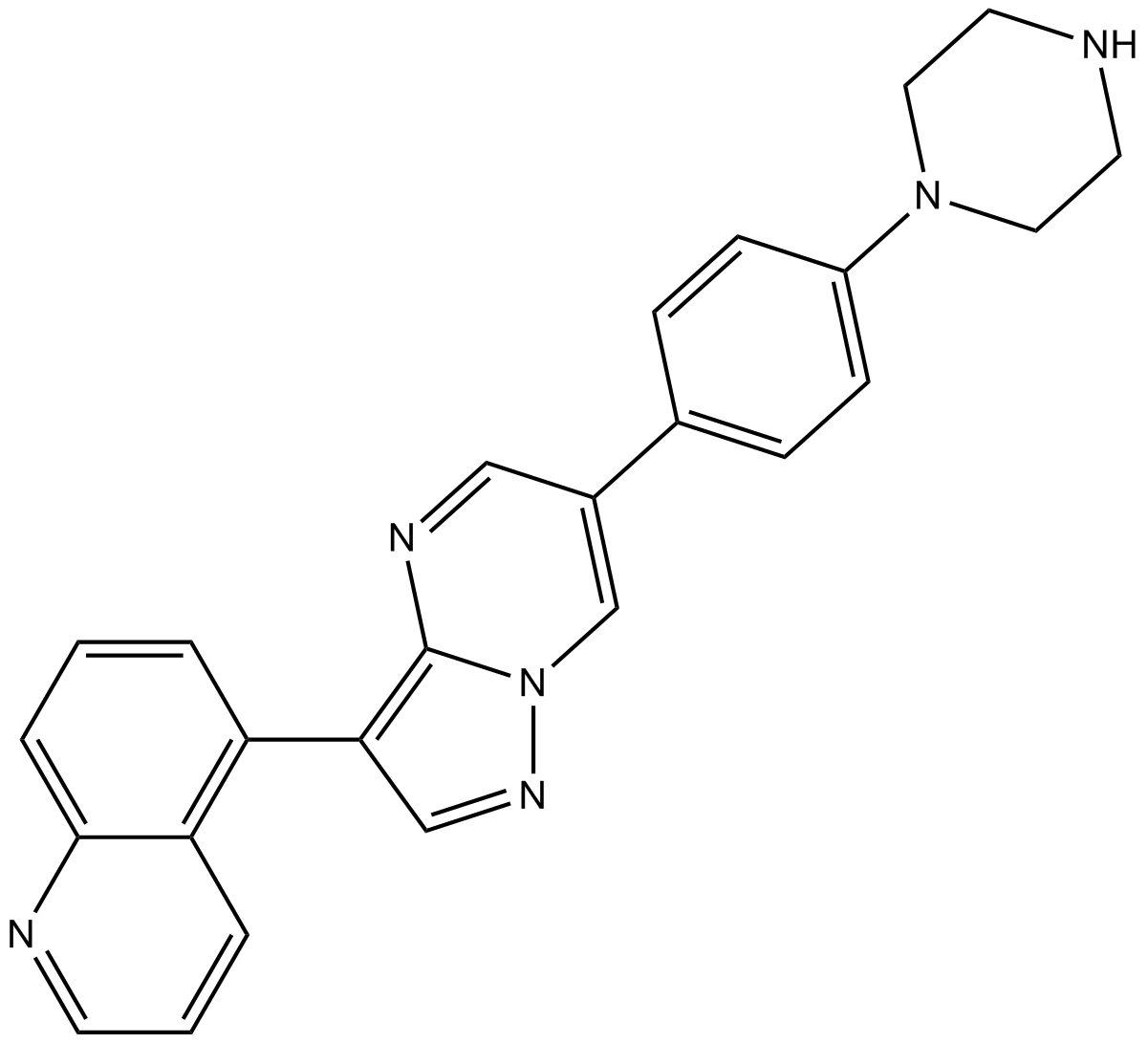
-
GC13225
LDN-214117
LDN-214117 ist ein oral aktiver ALK2-Inhibitor mit guter VertrÄglichkeit und guter Gehirnpenetration. LDN-214117 hat eine hohe SelektivitÄt und geringe ZytotoxizitÄt fÜr ALK2 mit einem IC50-Wert von 24 nM. LDN-214117 ist auch ein spezifischer Inhibitor der knochenmorphogenetischen Proteine (BMPs) und hat eine relativ selektive Hemmung fÜr BMP6 mit einem IC50-Wert von 100 nM. LDN-214117 kann fÜr die Erforschung von Fibrodysplasia ossificans progressiva (FOP), diffusem intrinsischem Pontin-Gliom (DIPG) verwendet werden up.
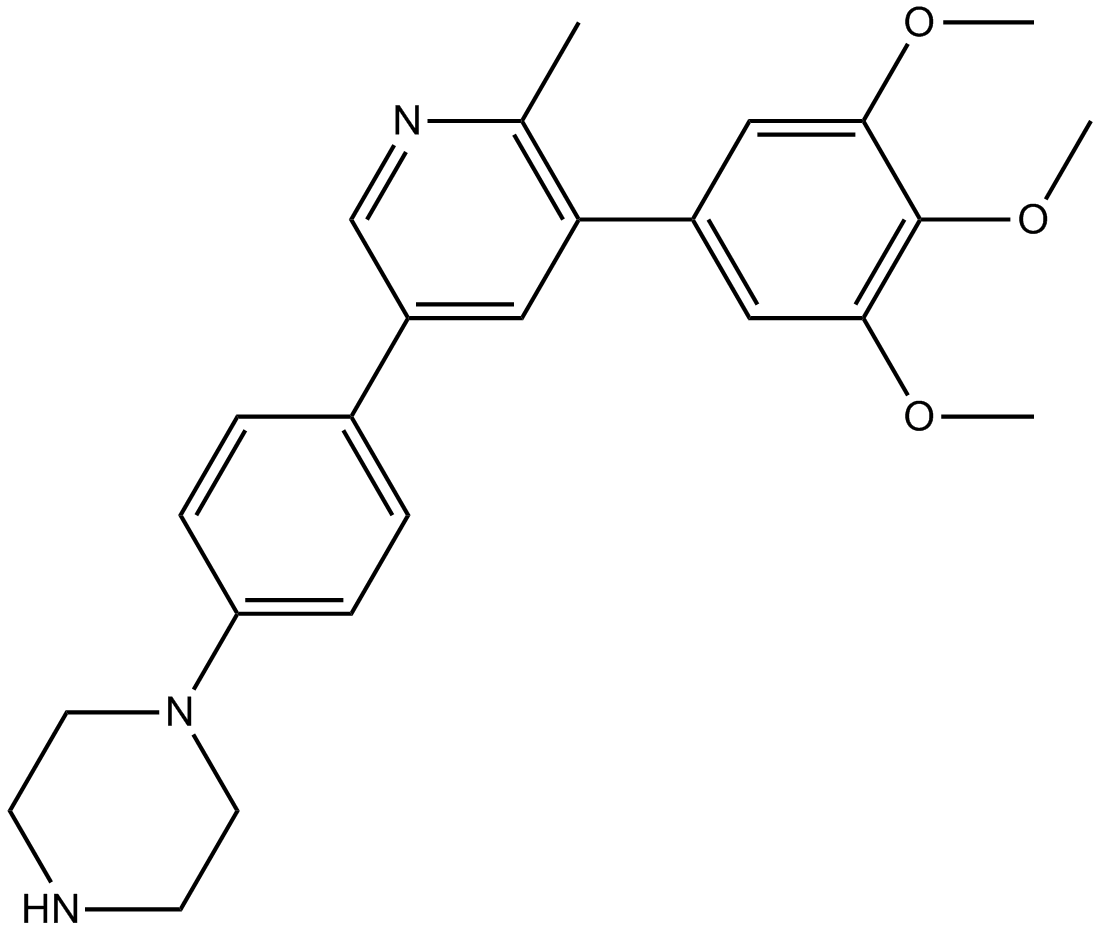
-
GC14931
LDN193189 Hydrochloride
An inhibitor of BMP receptors ALK1, ALK2, ALK3, and ALK6

-
GC36433
LDN193189 Tetrahydrochloride
LDN193189 Tetrahydrochlorid ist ein selektiver BMP-Typ-I-Rezeptor-Inhibitor, der ALK2 und ALK3 (IC50 = 5 nM bzw. 30 nM) wirksam hemmt, mit schwÄcheren Wirkungen auf ALK4, ALK5 und ALK7 (IC50 ≥ 500 nM).
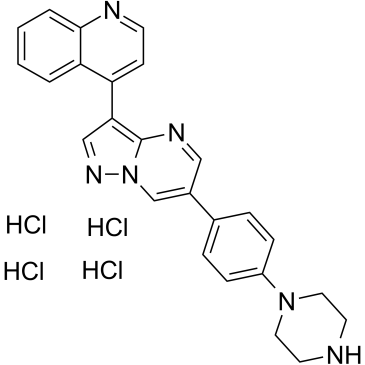
-
GC39398
LSKL, Inhibitor of Thrombospondin (TSP-1) (TFA)
LSKL, Inhibitor von Thrombospondin (TSP-1) TFA ist ein vom Latenz-assoziierten Protein (LAP)-TGFβ abgeleitetes Tetrapeptid und ein kompetitiver TGF-β1-Antagonist. LSKL, Inhibitor von Thrombospondin (TSP-1) TFA hemmt die Bindung von TSP-1 an LAP und lindert interstitielle Nierenfibrose und Leberfibrose. LSKL, Inhibitor von Thrombospondin (TSP-1) TFA unterdrÜckt Subarachnoidalfibrose durch Hemmung der TSP-1-vermittelten TGF-β1-AktivitÄt, verhindert die Entwicklung eines chronischen Hydrozephalus und verbessert langfristige neurokognitive Defekte nach Subarachnoidalblutung (SAH). LSKL, Inhibitor von Thrombospondin (TSP-1) TFA kann leicht die Blut-Hirn-Schranke passieren.

-
GC32728
LSKL, Inhibitor of Thrombospondin TSP-1
LSKL, Inhibitor of Thrombospondin TSP-1, ist ein von Latency-Associated Protein (LAP)-TGFβ abgeleitetes Tetrapeptid und ein kompetitiver TGF-β1-Antagonist. LSKL, Inhibitor von Thrombospondin TSP-1 hemmt die Bindung von TSP-1 an LAP und lindert interstitielle Nierenfibrose und Leberfibrose. LSKL, Inhibitor of Thrombospondin TSP-1, unterdrückt die Subarachnoidalfibrose durch Hemmung der TSP-1-vermittelten TGF-β1-Aktivität, verhindert die Entwicklung eines chronischen Hydrozephalus und verbessert langfristige neurokognitive Defekte nach Subarachnoidalblutung (SAB). LSKL, Inhibitor von Thrombospondin TSP-1 kann leicht die Blut-Hirn-Schranke überwinden.
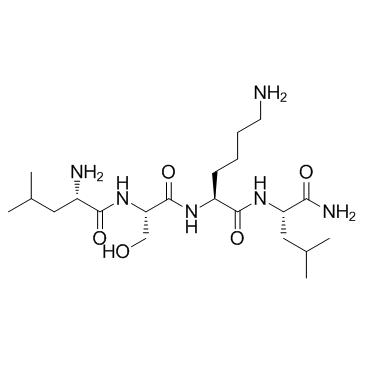
-
GC69412
Luspatercept
Luspatercept (ACE-536) is a recombinant modified ActRIIB fusion protein that can bind to the ligands of the transforming growth factor β superfamily. Luspatercept increases red blood cell count and promotes maturation of red blood cell precursors. Luspatercept binds with GDF11, inhibiting the Smad2/3 signaling pathway. Luspatercept can be used for research on anemia.
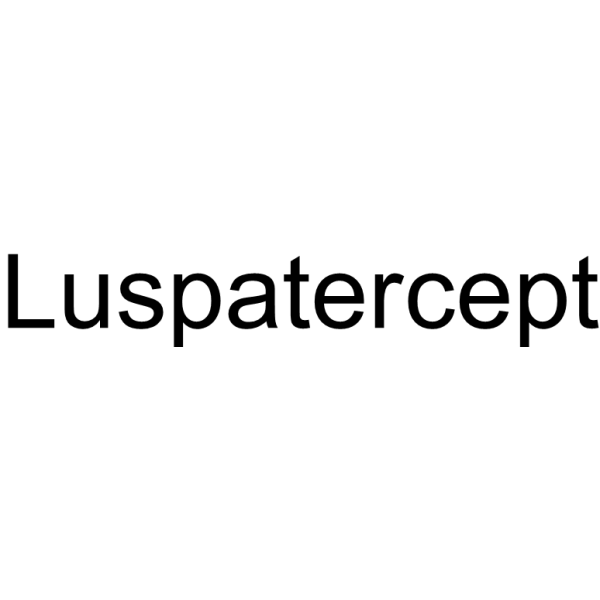
-
GC12402
LX7101 HCL
LX7101 HCL ist ein starker Inhibitor von LIMK und ROCK2 mit IC50-Werten von 24, 1,6 und 10 nM fÜr LIMK1, LIMK2 bzw. ROCK2; hemmt auch PKA mit einem IC50 von weniger als 1 nM.
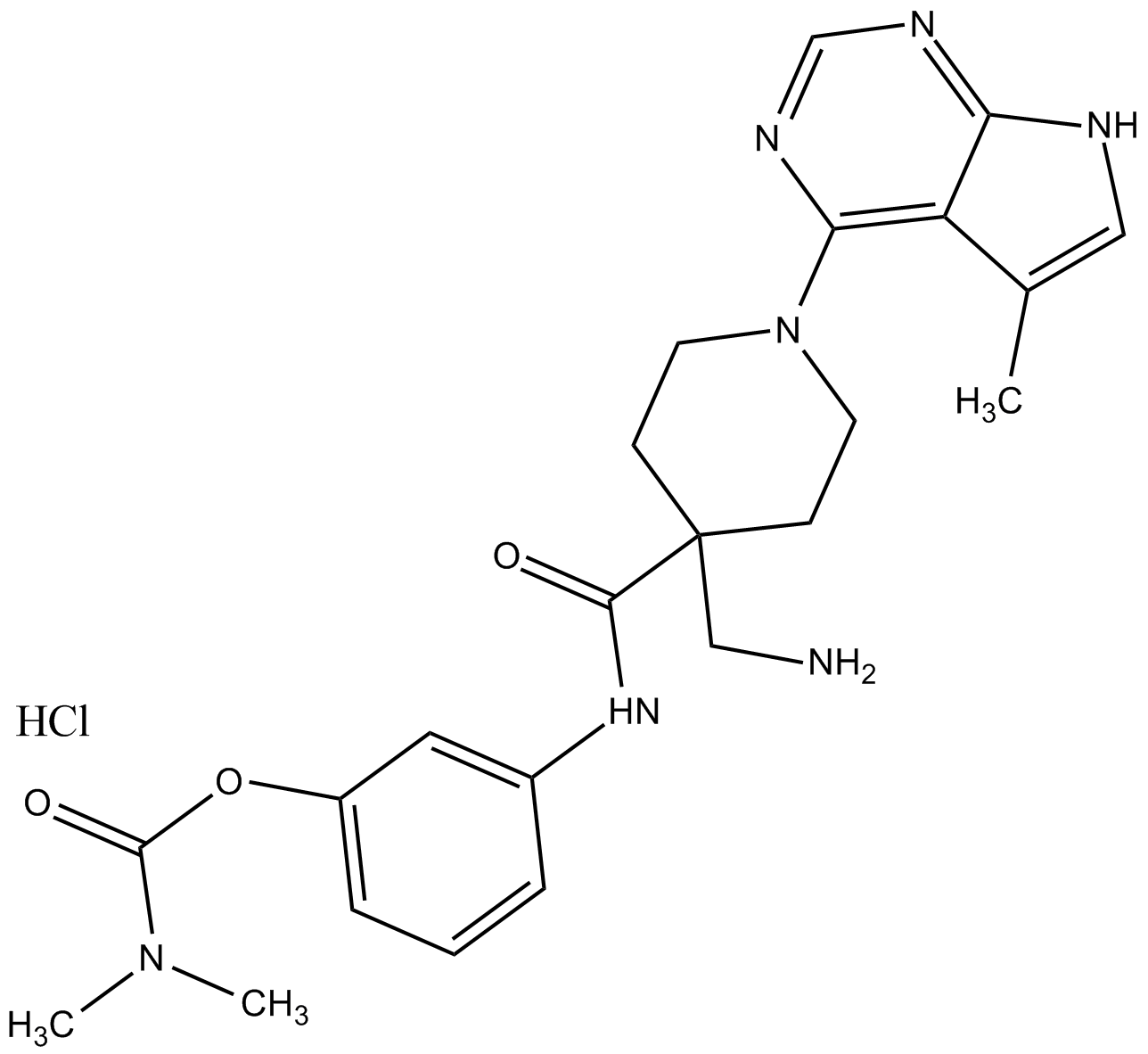
-
GC32811
LXS196
LXS196 (LXS196) ist ein potenter, selektiver und oral aktiver Proteinkinase C (PKC)-Inhibitor mit IC50-Werten von 1,9 nM, 0,4 nM und 3,1 μM fÜr PKC&7#945;, PKCθ bzw. GSK3β. LXS196 hat das Potenzial fÜr die Aderhautmelanomforschung.
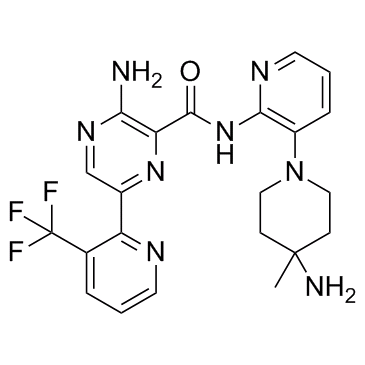
-
GC17563
LY 333531 hydrochloride
Ruboxistaurin (LY333531) Hydrochlorid ist ein oral aktiver, selektiver PKC-beta-Inhibitor (Ki=2 nM).
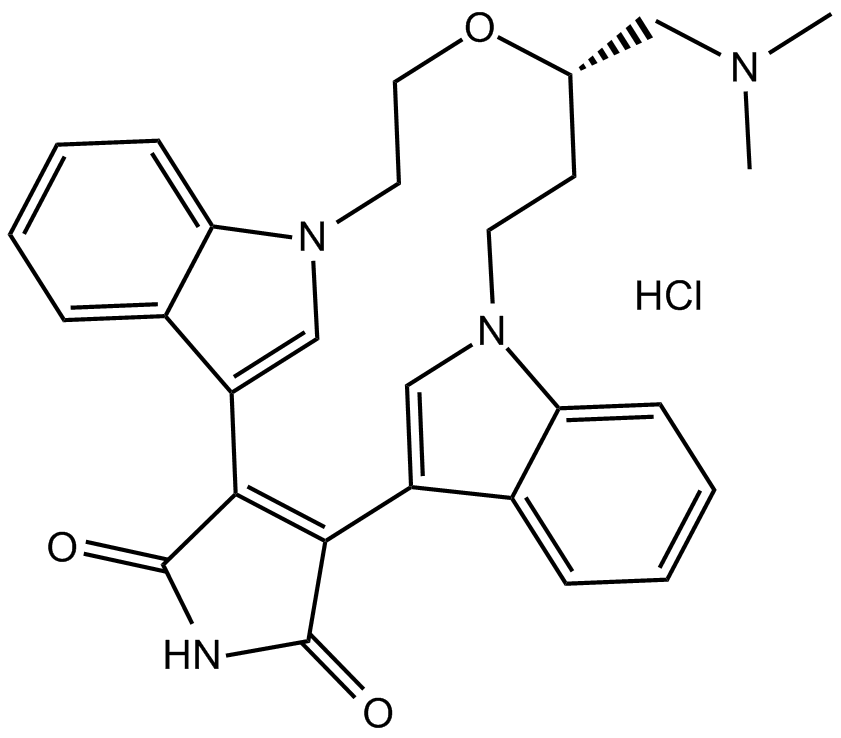
-
GC12363
LY2109761
LY2109761 ist ein oral aktiver, selektiver TGF-β-Rezeptor-Typ-I/II-Inhibitor mit einem Kis von 38 nM bzw. 300 nM.
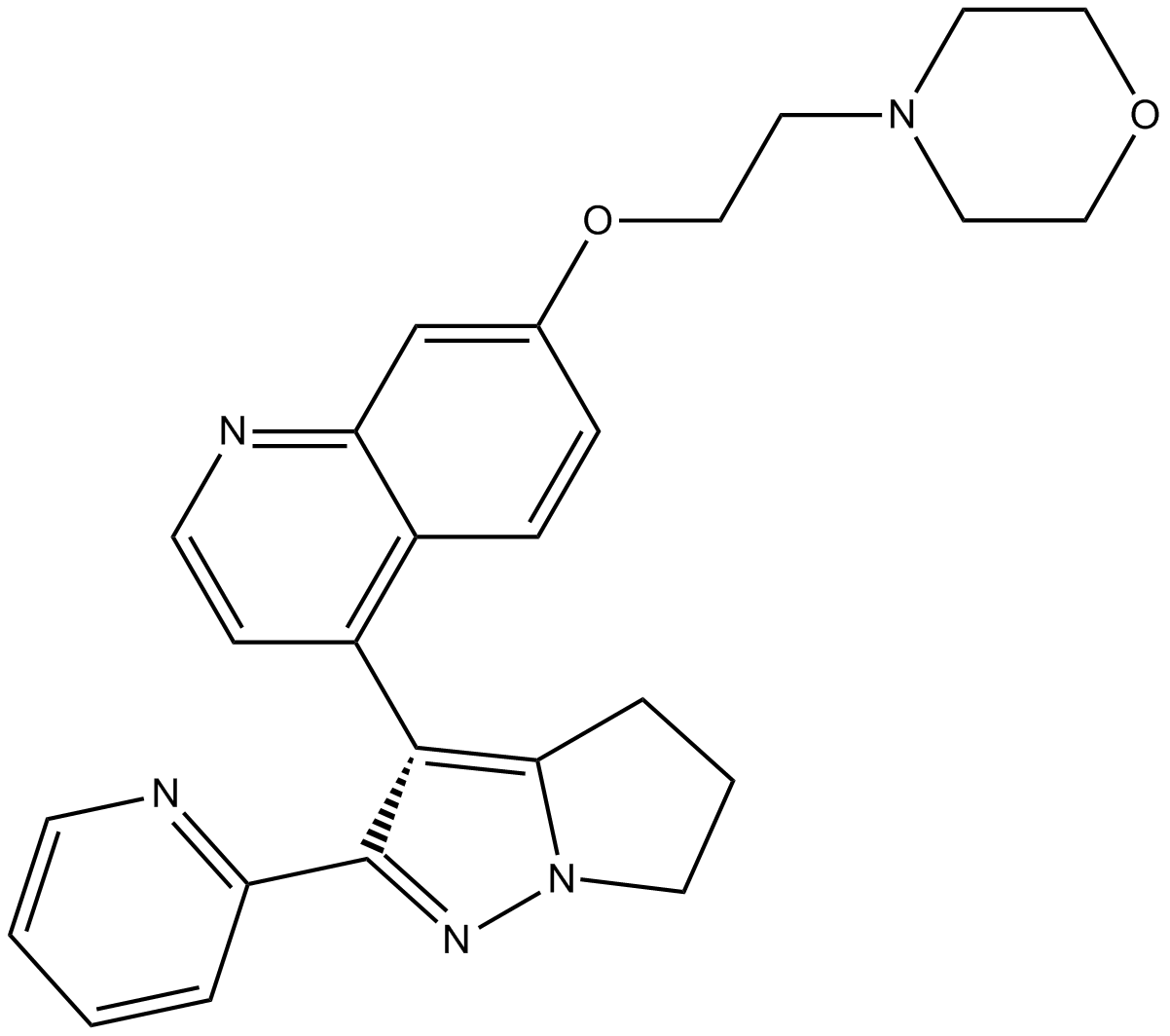
-
GC18015
LY2157299
LY2157299 (LY2157299) ist ein oraler und selektiver TGF-β Rezeptor Typ I (TGF-βRI) Kinase-Inhibitor mit einem IC50 von 56 nM.
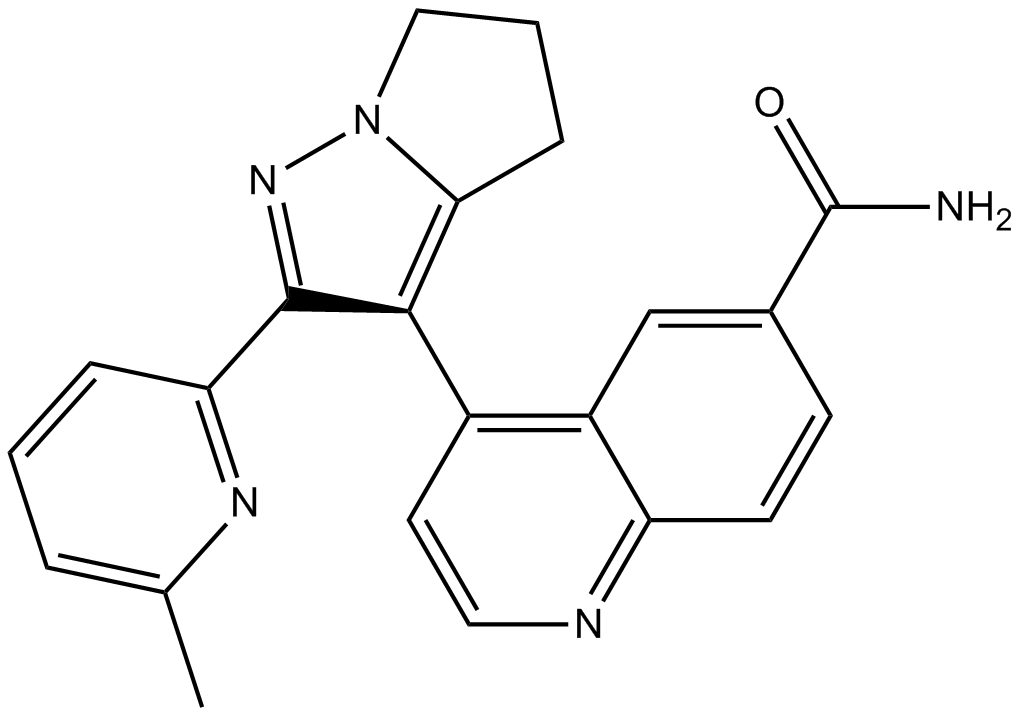
-
GC19234
LY3200882
LY3200882 ist ein potenter, hochselektiver, ATP-kompetitiver und oral aktiver TGF-β-Rezeptor Typ 1 (ALK5)-Inhibitor mit einem IC50 von 38,2 nM.
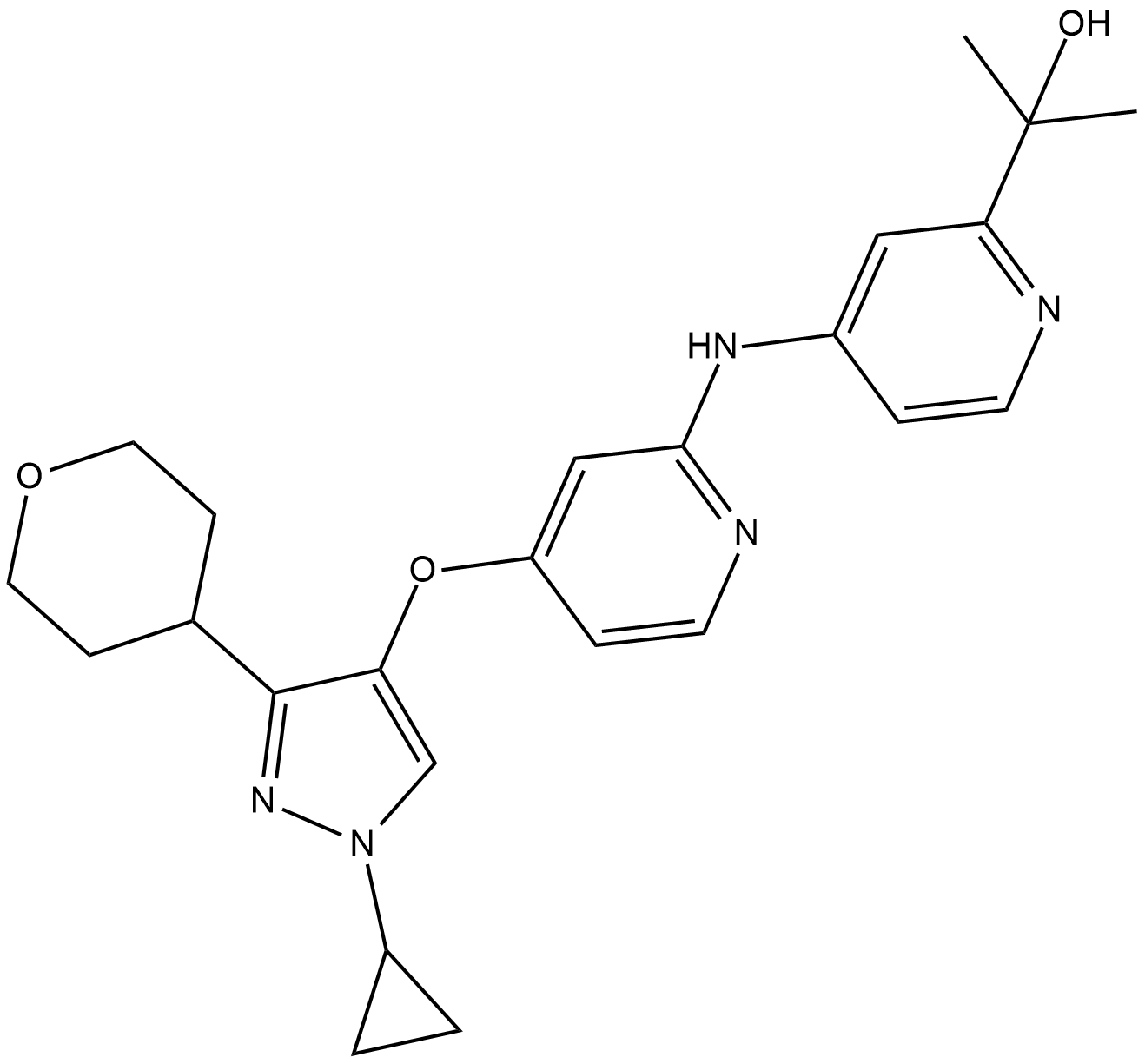
-
GC11604
LY364947
LY364947 (HTS466284) ist ein potenter ATP-kompetitiver Inhibitor von TGFβR-I mit IC50 von 59 nM und zeigt eine 7-fache Selektivität gegenüber TGFβR-II.
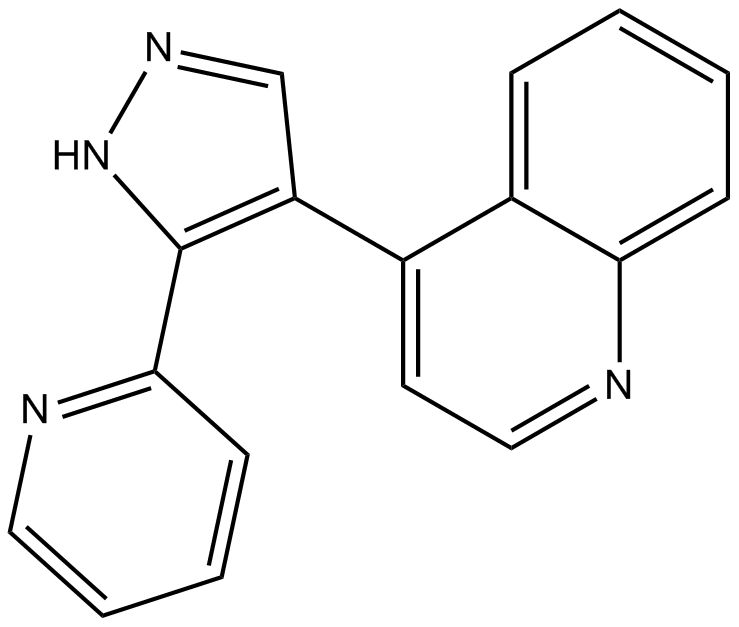
-
GC30545
Malantide
Malantid ist ein synthetisches Dodecapeptid, das von der durch cAMP-abhÄngige Proteinkinase (PKA) phosphorylierten Stelle auf der β-Untereinheit der Phosphorylasekinase abgeleitet ist. Malantid ist ein hochspezifisches Substrat fÜr PKA mit einem Km von 15 μM und zeigt in verschiedenen Rattengewebeextrakten eine Proteininhibitor(PKI)-Hemmung von >90 % der Substratphosphorylierung. Malantid ist auch ein effizientes Substrat fÜr PKC mit einem Km von 16 μM.
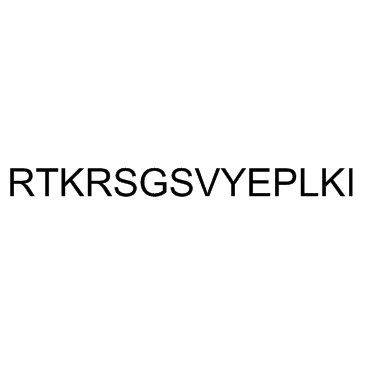
-
GC10496
Midostaurin (PKC412)
Midostaurin (PKC412) (PKC412; CGP 41251) ist ein oral aktiver, reversibler, mehrfach zielgerichteter Proteinkinase-Inhibitor. Midostaurin (PKC412) hemmt PKCα/β/γ, Syk, Flk-1, Akt, PKA, c-Kit, c-Fgr, c-Src, FLT3, PDFR&7#946; und VEGFR1/2 mit IC50s im Bereich von 22-500 nM. Midostaurin (PKC412) reguliert auch die Genexpression der endothelialen Stickoxidsynthase (eNOS) hoch. Midostaurin (PKC412) zeigt starke Antikrebswirkungen.
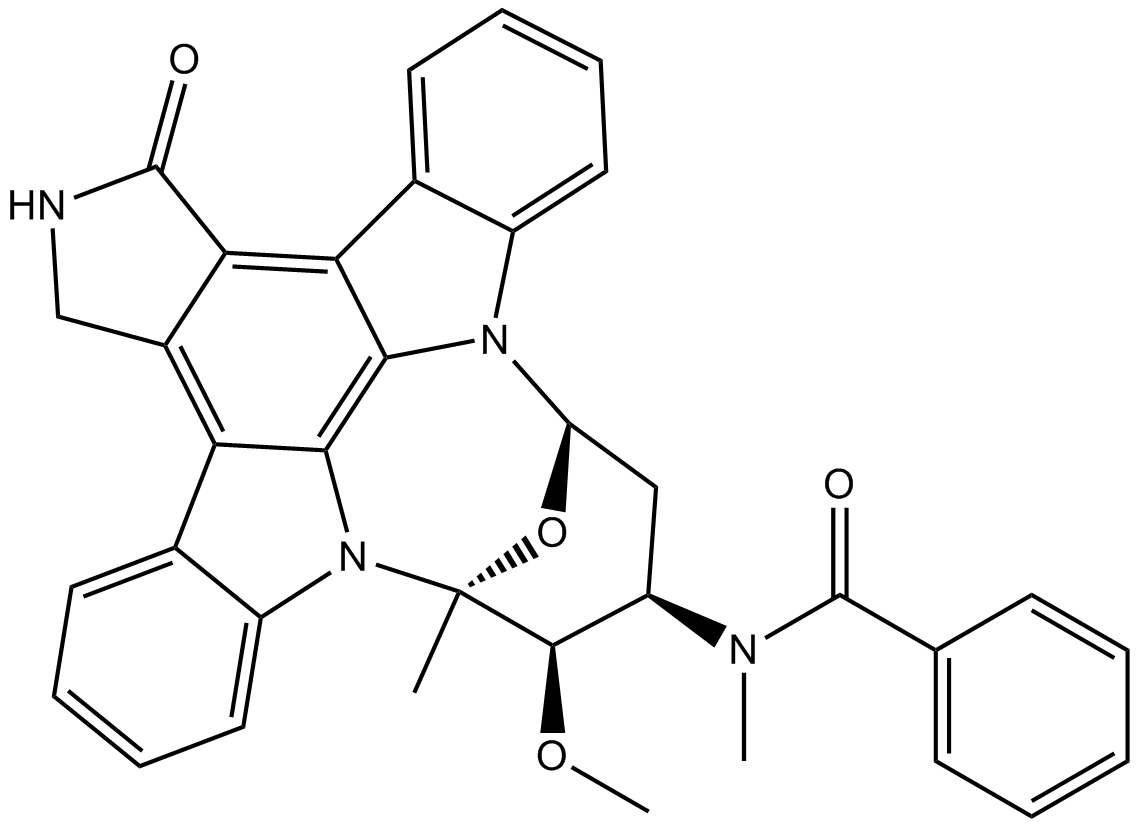
-
GC32714
Mitoxantrone (mitozantrone)
Mitoxantron (Mitozantron) ist ein potenter Topoisomerase-II-Hemmer.
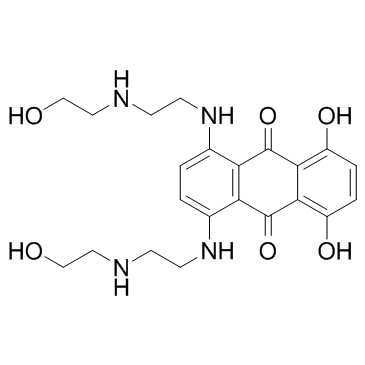
-
GC14363
Mitoxantrone HCl
Mitoxantrone HCl ist ein potenter Topoisomerase-II-Hemmer.
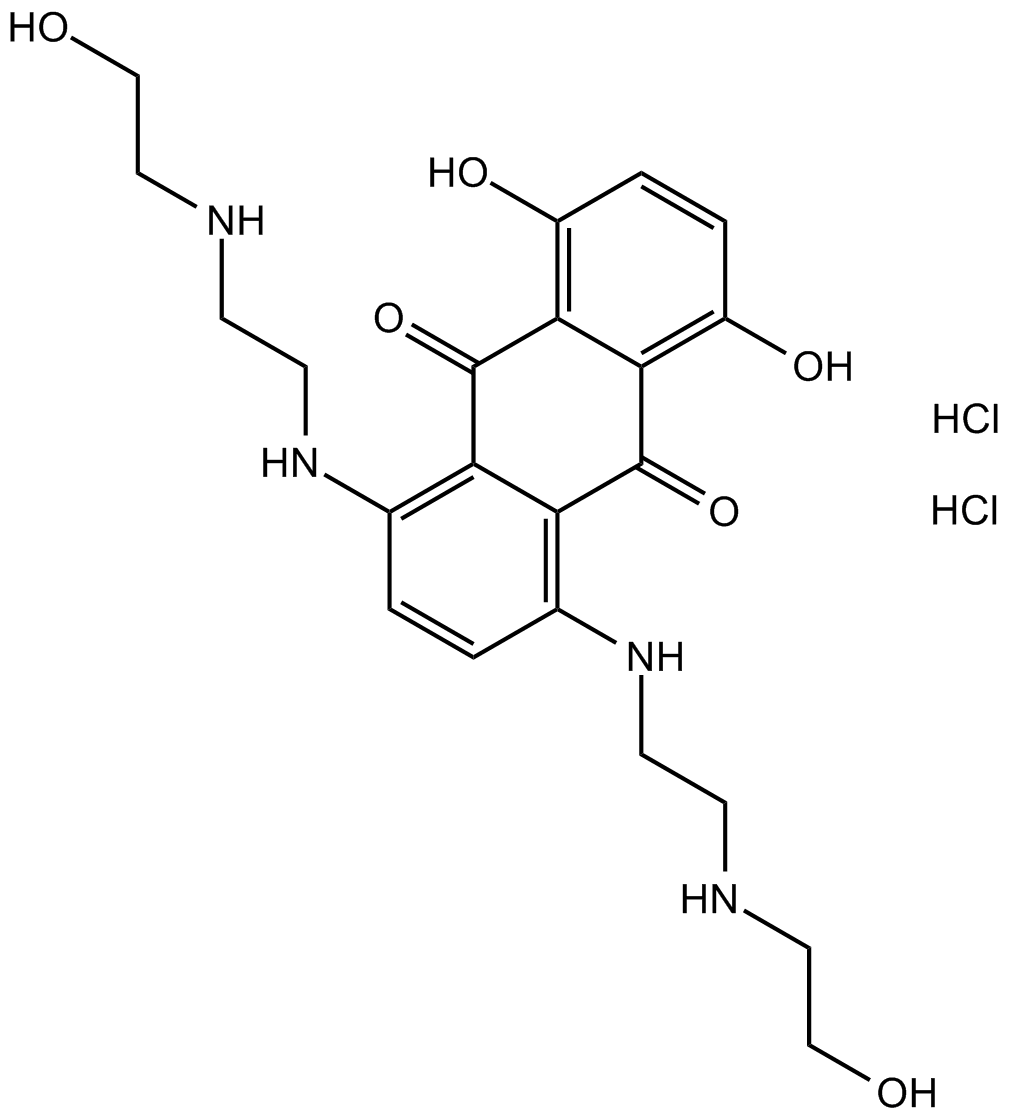
-
GC17582
ML347
ML347 (LDN193719) ist ein hochselektiver ALK1/ALK2-Inhibitor. ML347 hat IC50-Werte von 46 und 32 nM gegen ALK1 bzw. ALK2, > 300-fach selektiv gegenÜber ALK3. ML347 blockiert die Phosphorylierung von Smad1/5 durch TGF-β1.
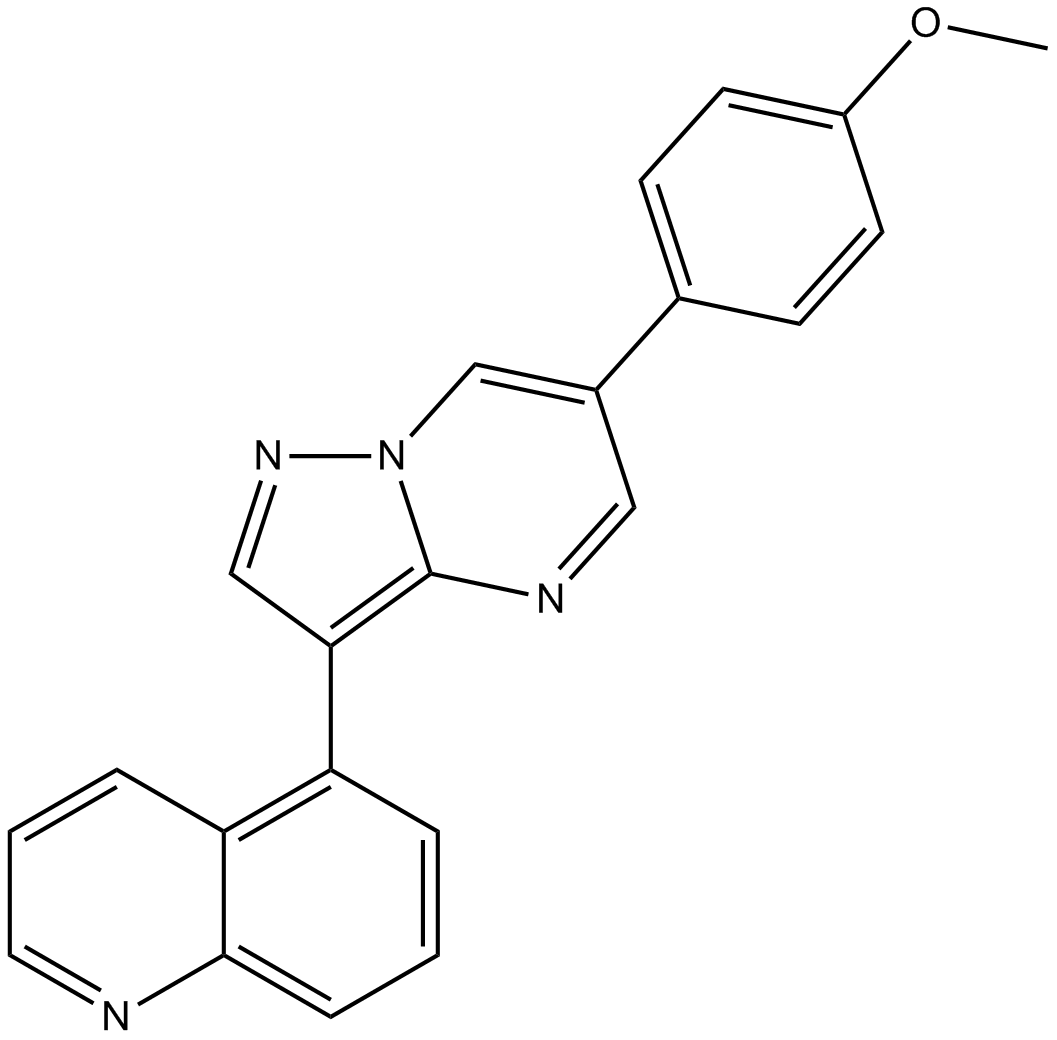
-
GC65585
Mongersen
Mongersen (GED-0301) ist ein spezifisches und oral aktives SMAD7-Antisense-Oligonukleotid.

-
GC63778
Myelin Basic Protein TFA
Basisches Myelinprotein (MHP4-14) TFA, ein synthetisches Peptid, das die Reste 4-14 des basischen Myelinproteins umfasst, ist ein sehr selektives PKC-Substrat (Km = 7 μM).
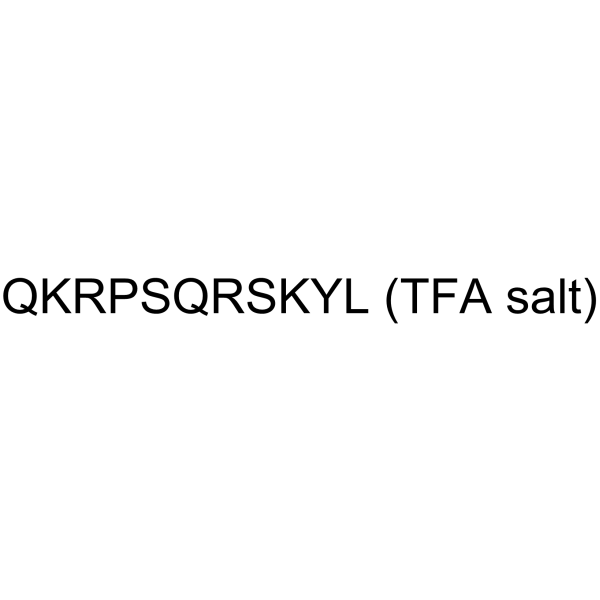
-
GC49269
Myr-ZIP
A PKMζ inhibitor

-
GC44303
N-Acetylpuromycin
N-Acetylpuromycin is a non-ribotoxic form of the antibiotic puromycin that is formed in puromycin-resistant S.

-
GC25662
N-Desmethyltamoxifen
N-Desmethyltamoxifen, the major metabolite of Tamoxifen in humans and a ten-fold more potent protein kinase C (PKC) inhibitor than Tamoxifen, also is a potent regulator of ceramide metabolism in human AML cells, limiting ceramide glycosylation, hydrolysis, and sphingosine phosphorylation.
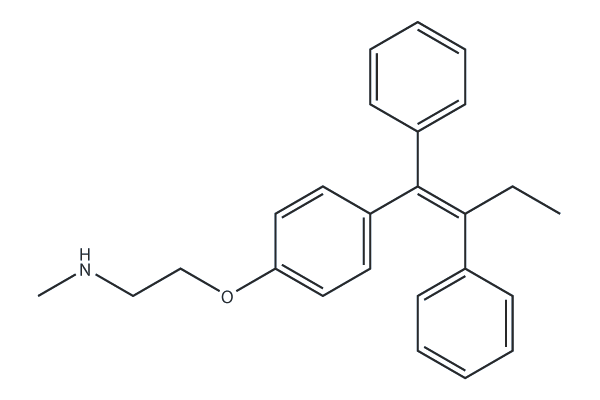
-
GC38931
N-Desmethyltamoxifen hydrochloride
N-Desmethyltamoxifenhydrochlorid ist der Hauptmetabolit von Tamoxifen beim Menschen. N-Desmethyltamoxifen, ein schwaches AntiÖstrogen, ist ein zehnmal stÄrkerer Proteinkinase C (PKC)-Hemmer als Tamoxifen. N-Desmethyltamoxifen-Hydrochlorid ist auch ein starker Regulator des Ceramid-Stoffwechsels in menschlichen AML-Zellen, der die Glykosylierung, Hydrolyse und Sphingosin-Phosphorylierung von Ceramid begrenzt.

-
GC10716
Netarsudil (AR-13324)
ROCK inhibitor
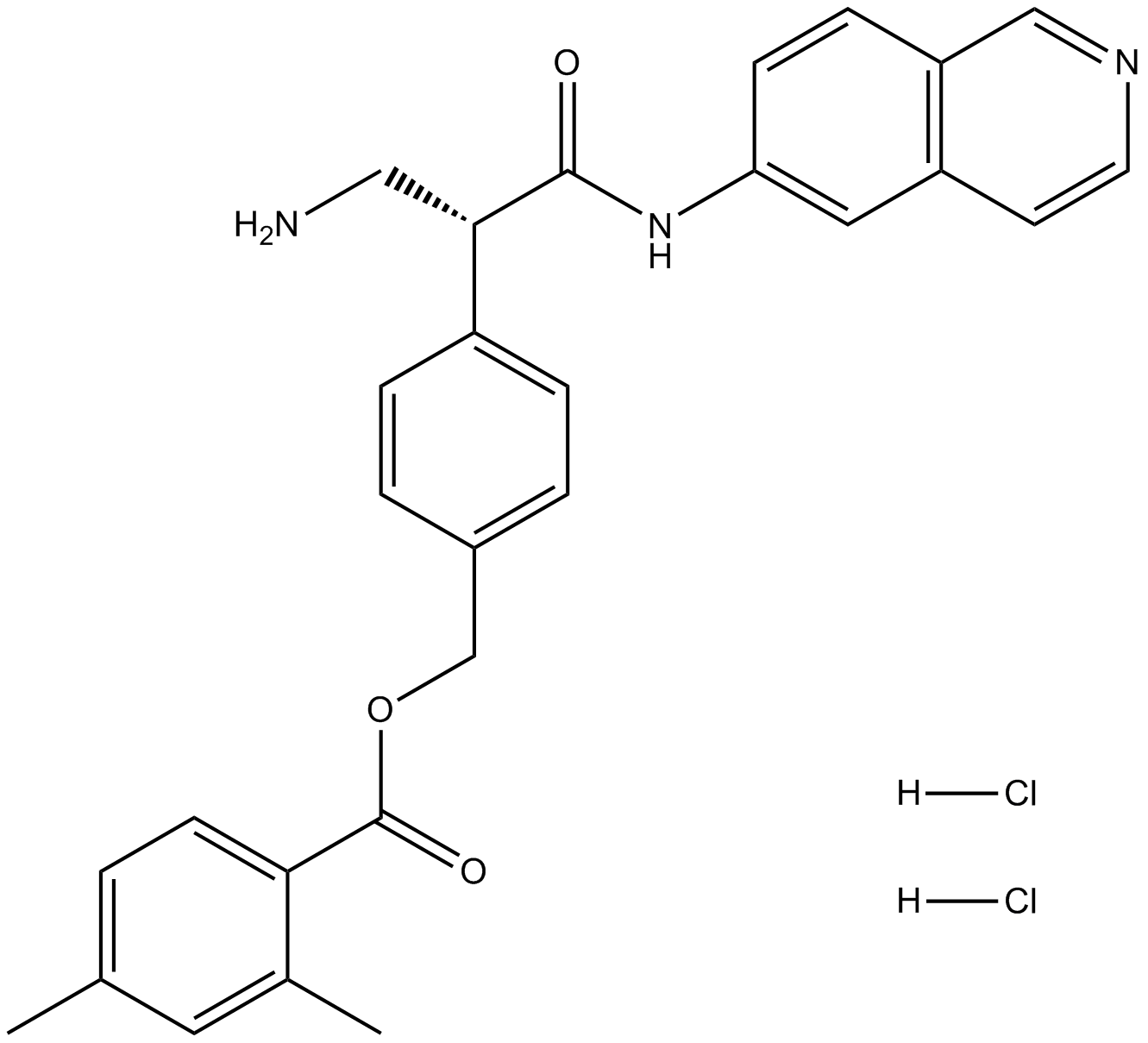
-
GC13514
NG25
An inhibitor of MAP4K2 and TAK1

-
GC25669
Nilotinib hydrochloride
Nilotinib hydrochloride (AMN-107) is the hydrochloride salt form of nilotinib, an orally bioavailable Bcr-Abl tyrosine kinase inhibitor with antineoplastic activity.
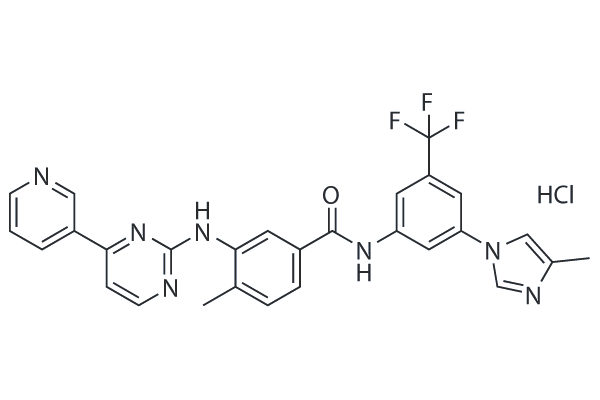
-
GC14075
Nocodazole
Ein Tubulin-Produktionshemmer, ein antineoplastisches Mittel.
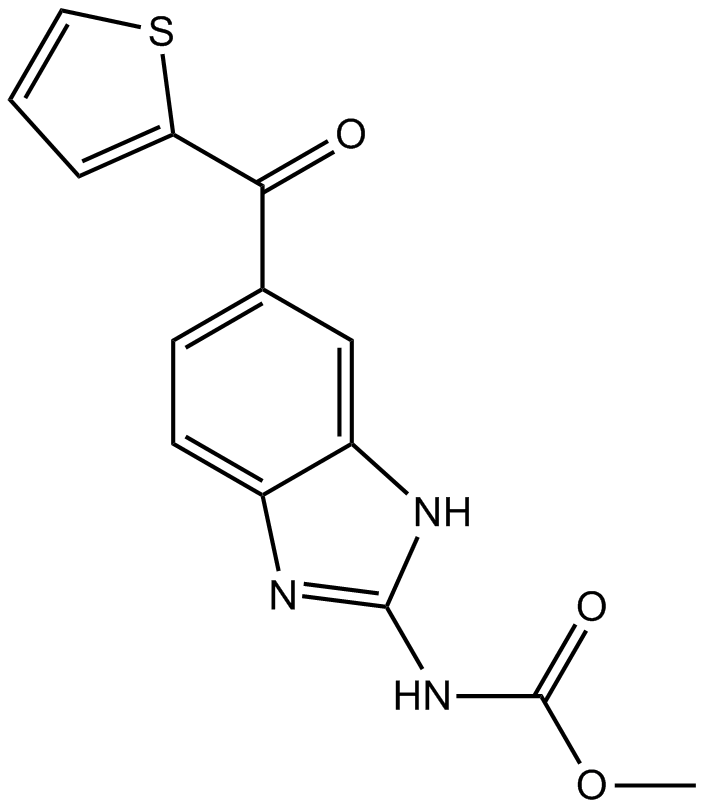
-
GC60274
O-Desmethyl Midostaurin
O-Desmethyl Midostaurin (CGP62221; O-Desmethyl PKC412) ist der aktive Metabolit von Midostaurin Über den Cytochrom-P450-Leberenzymstoffwechsel. O-Desmethyl-Midostaurin kann als Indikator fÜr den Midostaurin-Metabolismus in vivo verwendet werden. Midostaurin ist ein Multi-Targeting-Proteinkinase-Inhibitor mit einem IC50-Wert von 22-500 nM.

-
GC36807
ON 146040
ON 146040 ist ein potenter PI3Kα- und PI3Kδ-Inhibitor (IC50≈14 bzw. 20 nM). ON 146040 hemmt auch Abl1 (IC50 < 150 nM).
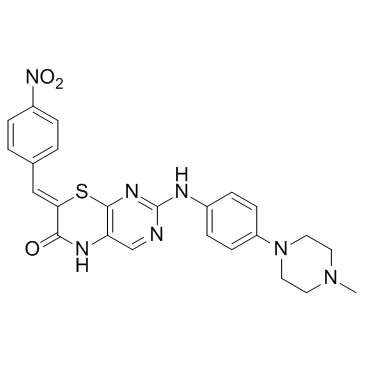
-
GN10378
Oxymatrine
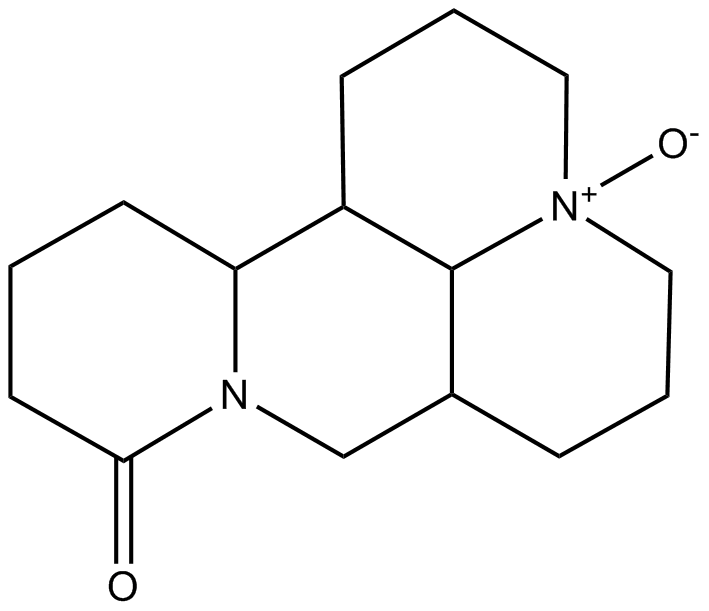
-
GC36833
p32 Inhibitor M36
p32-Inhibitor M36 (M36) ist ein p32-Inhibitor des mitochondrialen Proteins, der direkt an p32 bindet und die p32-Assoziation mit LyP-1 hemmt.
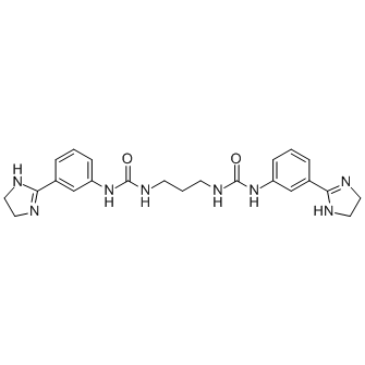
-
GC12637
PD 180970
PD 180970 ist ein hochpotenter und ATP-kompetitiver p210Bcr-Abl-Kinase-Inhibitor mit einem IC50 von 5 nM zur Hemmung der Autophosphorylierung von p210Bcr-Abl.
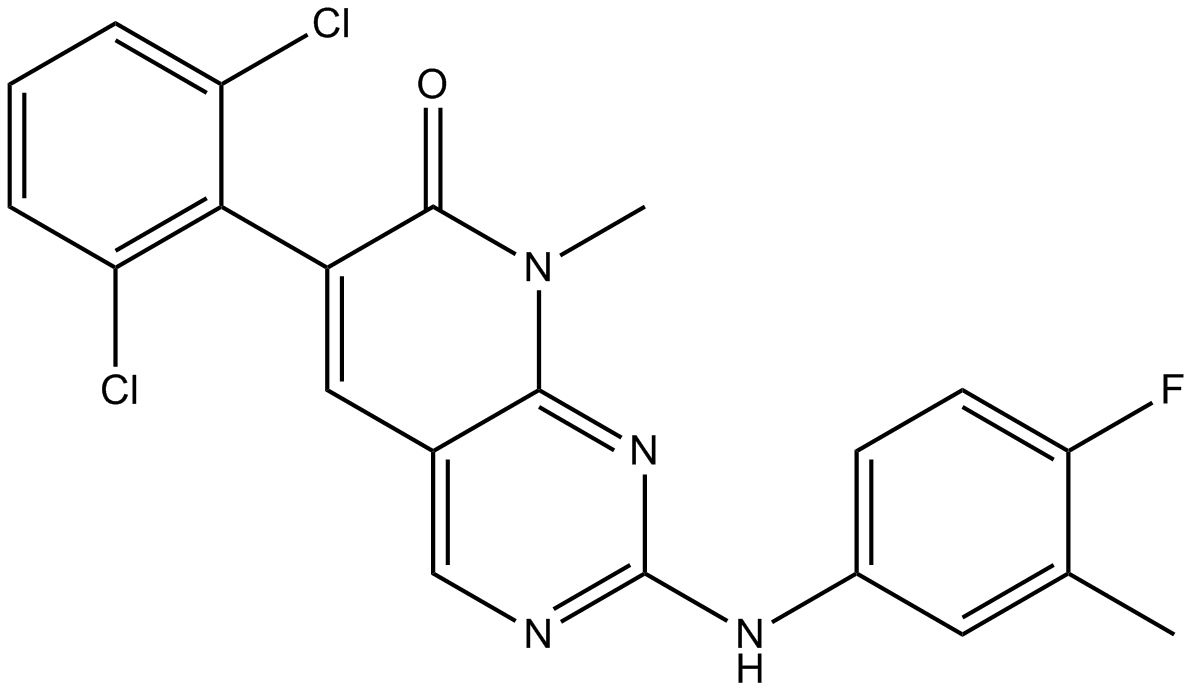
-
GC13592
PD173955
PD173955 ist ein fÜr die src-Familie selektiver Tyrosinkinase-Inhibitor mit einem IC50 von ~22 nM fÜr Src-, Yes- und Abl-Kinase; weniger potent fÜr FGFRα und keine AktivitÄt auf InsR und PKC.
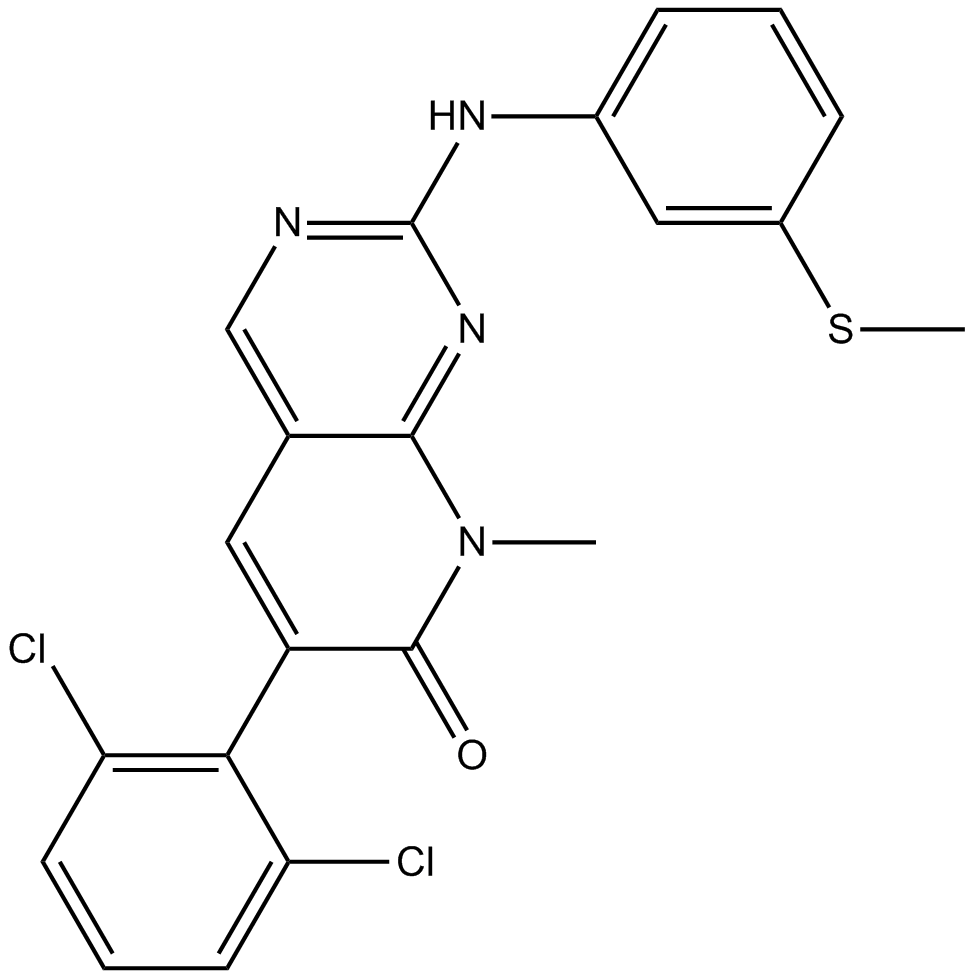
-
GC33901
Pentanoic acid
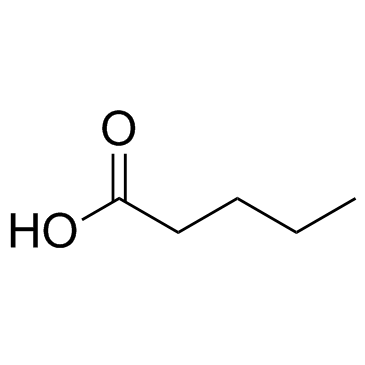
-
GC61585
Pep2m, myristoylated TFA
Pep2m, myristoyliertes TFA (Myr-Pep2m TFA) ist ein zellgÄngiges Peptid.
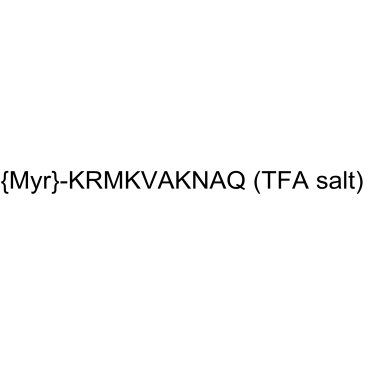
-
GC14767
PF-00562271
PF-562271 (VS-6062) Besilat ist ein potenter ATP-kompetitiver, reversibler Inhibitor von FAK und Pyk2-Kinase mit einem IC50 von 1,5 nM bzw. 13 nM.
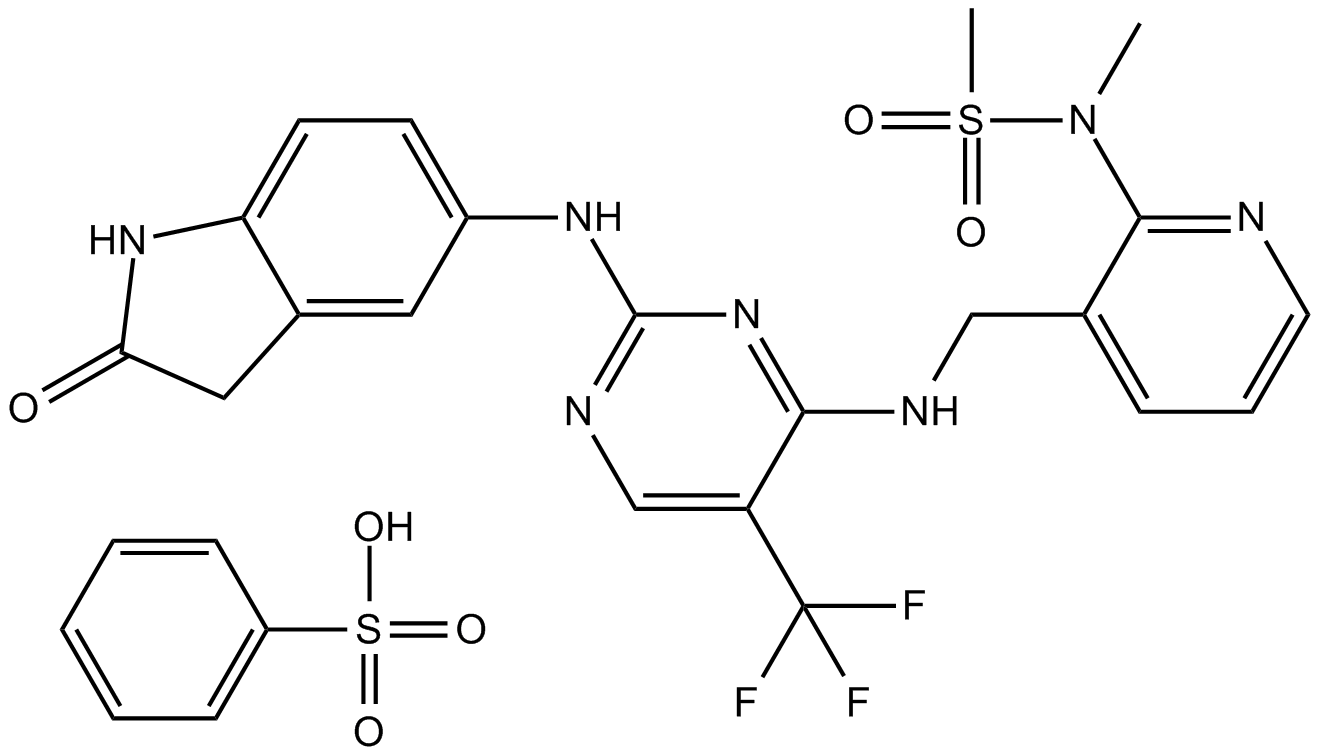
-
GC14407
PF-431396
PF-431396 ist ein oral aktiver Dual-Focal-AdhÄsionskinase (FAK)- und prolinreicher Tyrosinkinase-2 (PYK2)-Inhibitor mit IC50-Werten von 2 nM bzw. 11 nM.
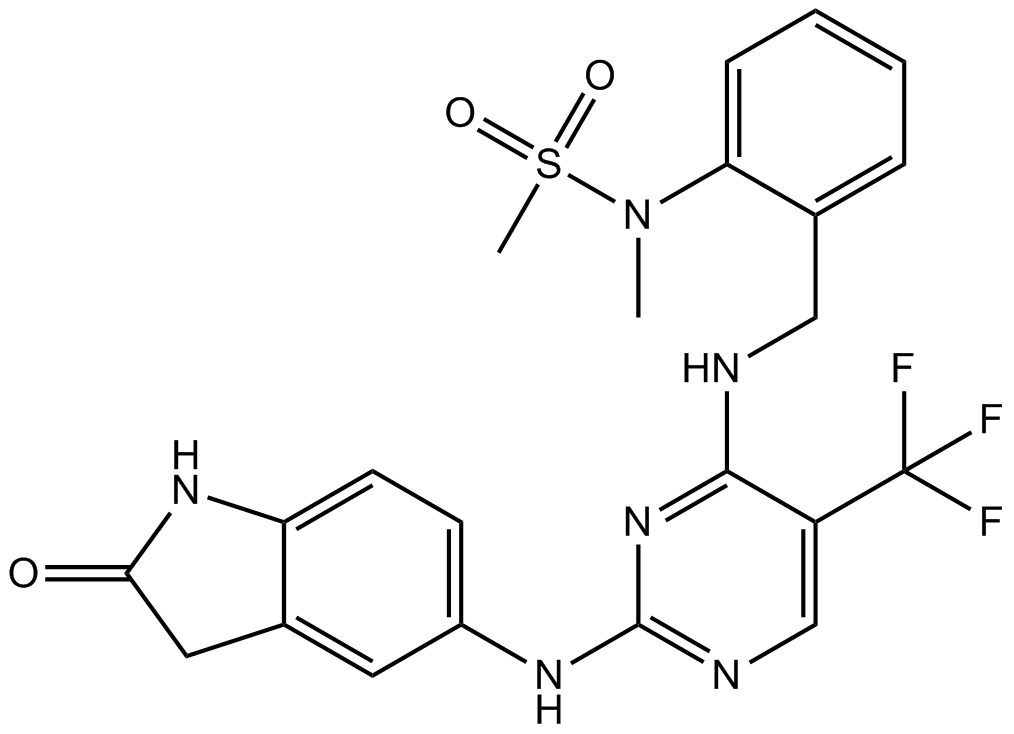
-
GC15380
PF-562271
PF-562271 (VS-6062) ist ein potenter, ATP-kompetitiver und reversibler FAK- und Pyk2-Kinase-Inhibitor mit IC50-Werten von 1,5 nM bzw. 13 nM.
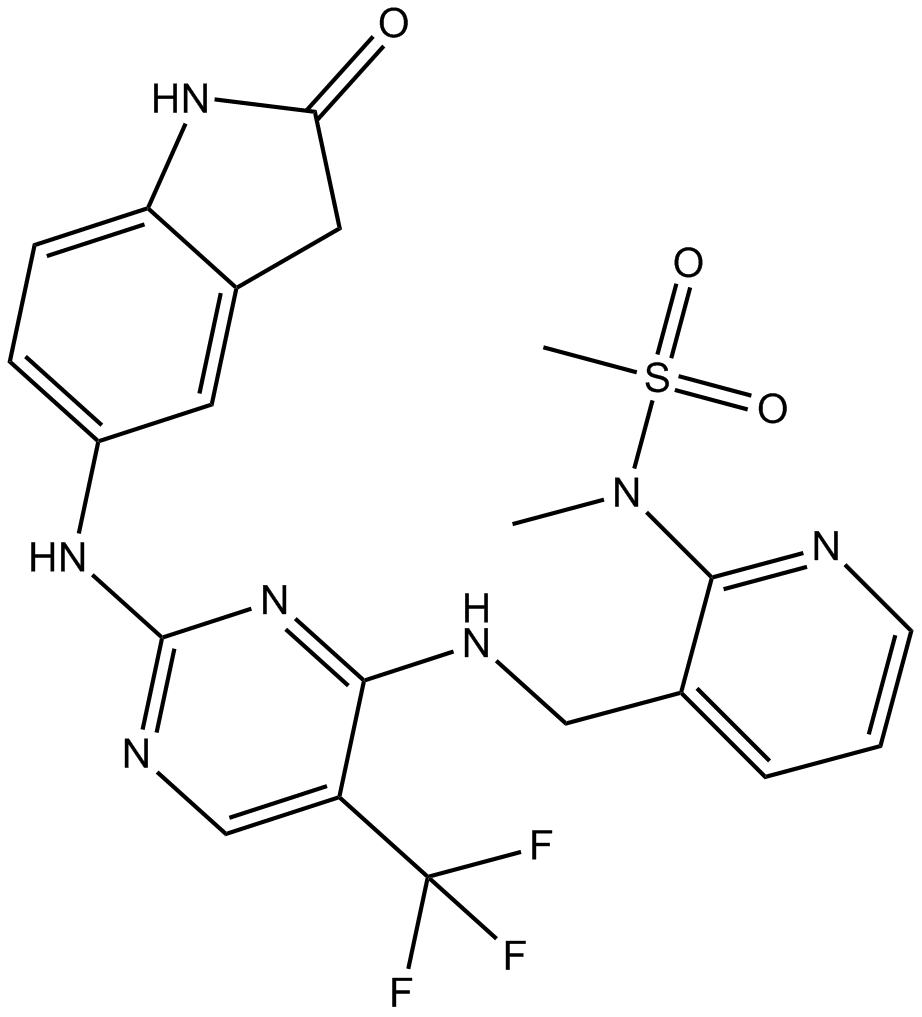
-
GC10810
PF-562271 HCl
PF-562271 (VS-6062) Hydrochlorid ist ein potenter, ATP-kompetitiver und reversibler FAK- und Pyk2-Kinase-Inhibitor mit IC50-Werten von 1,5 nM bzw. 13 nM.
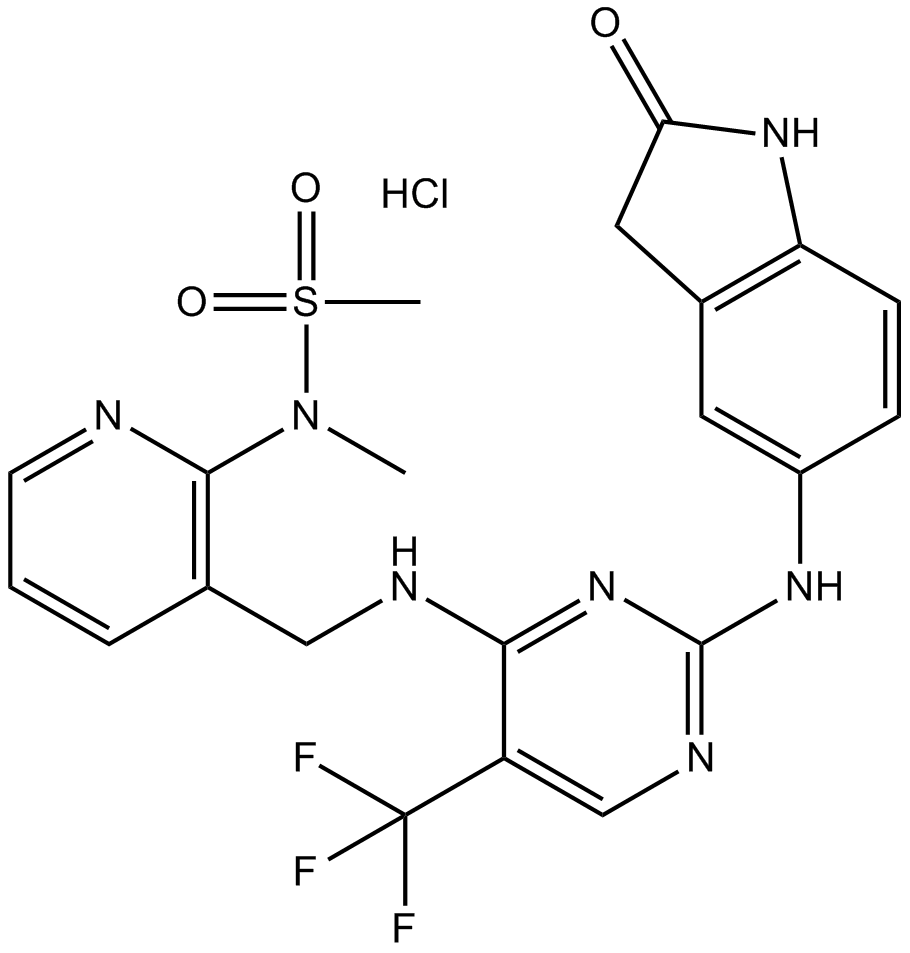
-
GC17352
Phorbol 12,13-dibutyrate
Phorbol 12,13-Dibutyrat (Phorbol Dibutyrat) ist ein PKC-Aktivator und ein starker Promotor fÜr Hauttumoren.
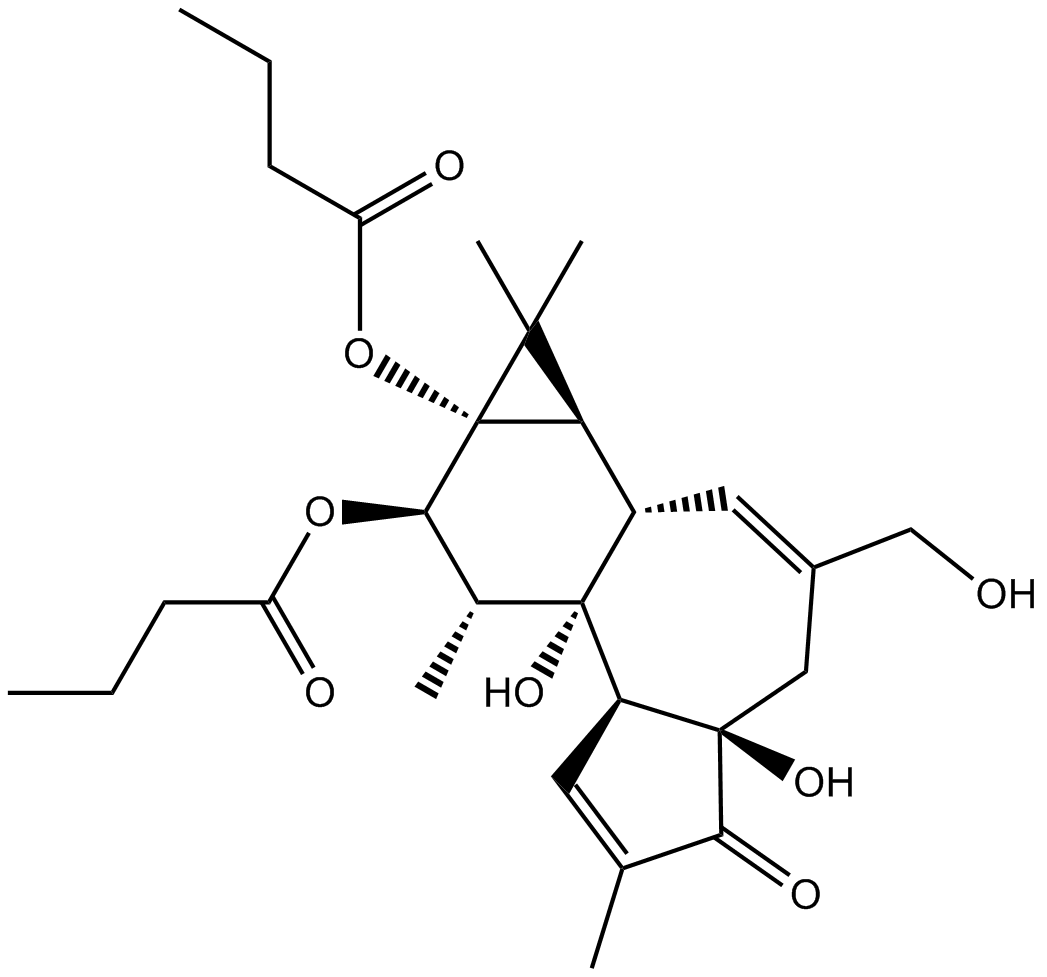
-
GC12790
Pirfenidone
Pirfenidon (AMR69) ist ein antifibrotisches Mittel, das die CCL2- und CCL12-Produktion in Fibrozytenzellen abschwÄcht.
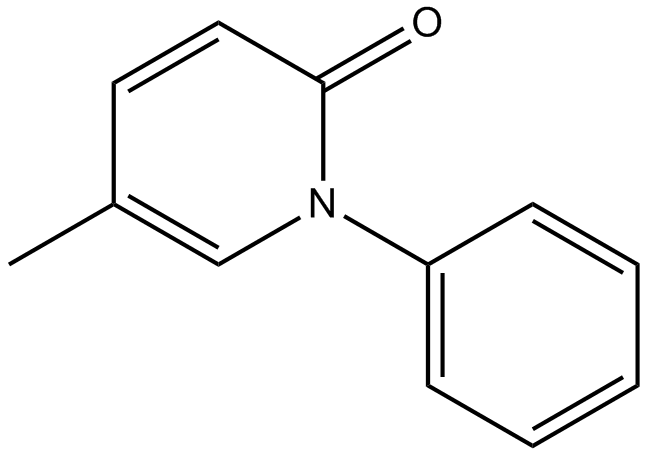
-
GC40197
Pirfenidone-d5
Pirfenidon d5 (AMR69 d5) ist ein mit Deuterium bezeichnetes Pirfenidon.

-
GC15471
PKC β pseudosubstrate
Selective cell-permeable peptide inhibitor of protein kinase C
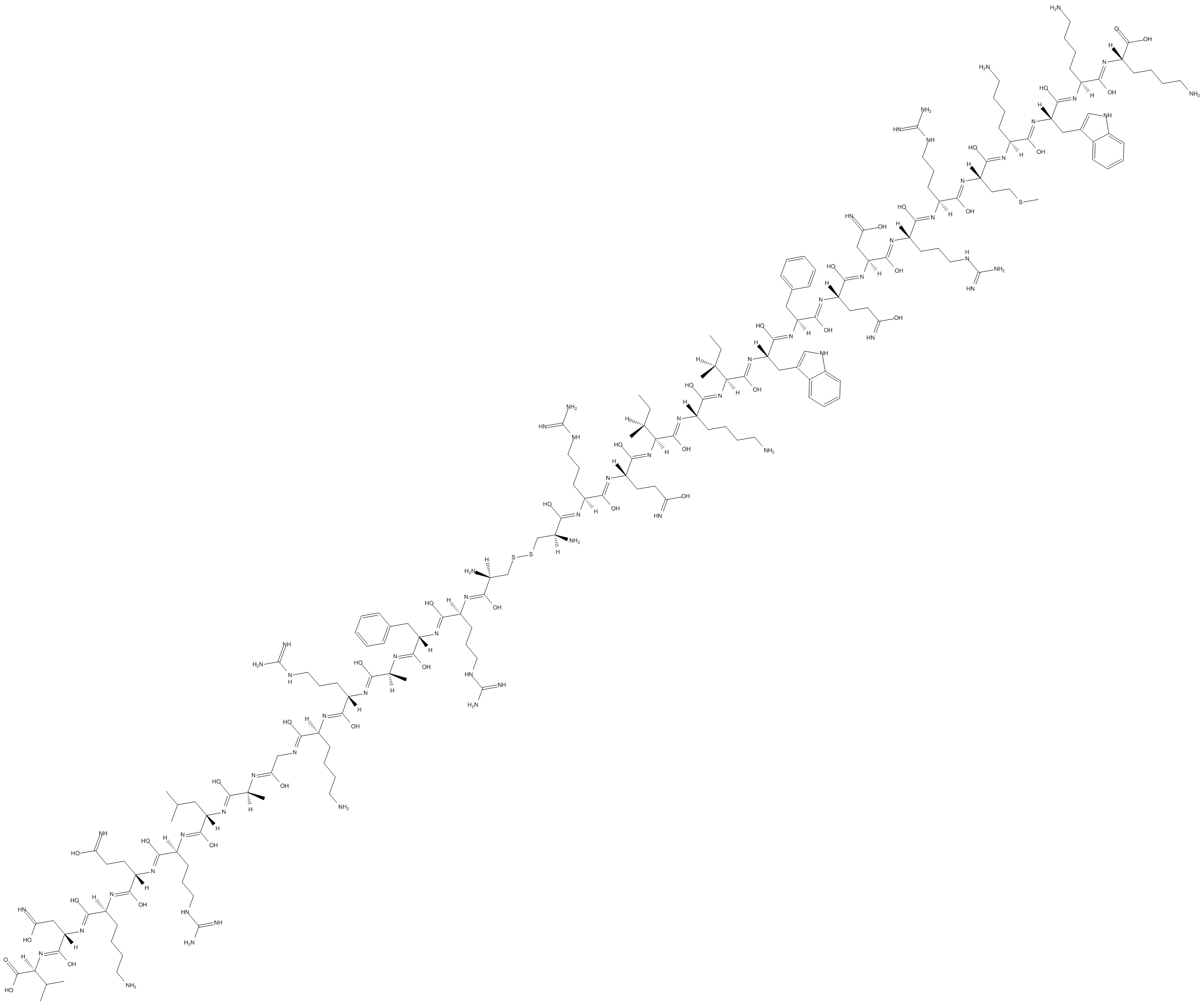
-
GC10404
PKC ζ pseudosubstrate
PKC ζ Pseudosubstrat ist ein selektiver zelldurchlÄssiger Inhibitor von PKC.
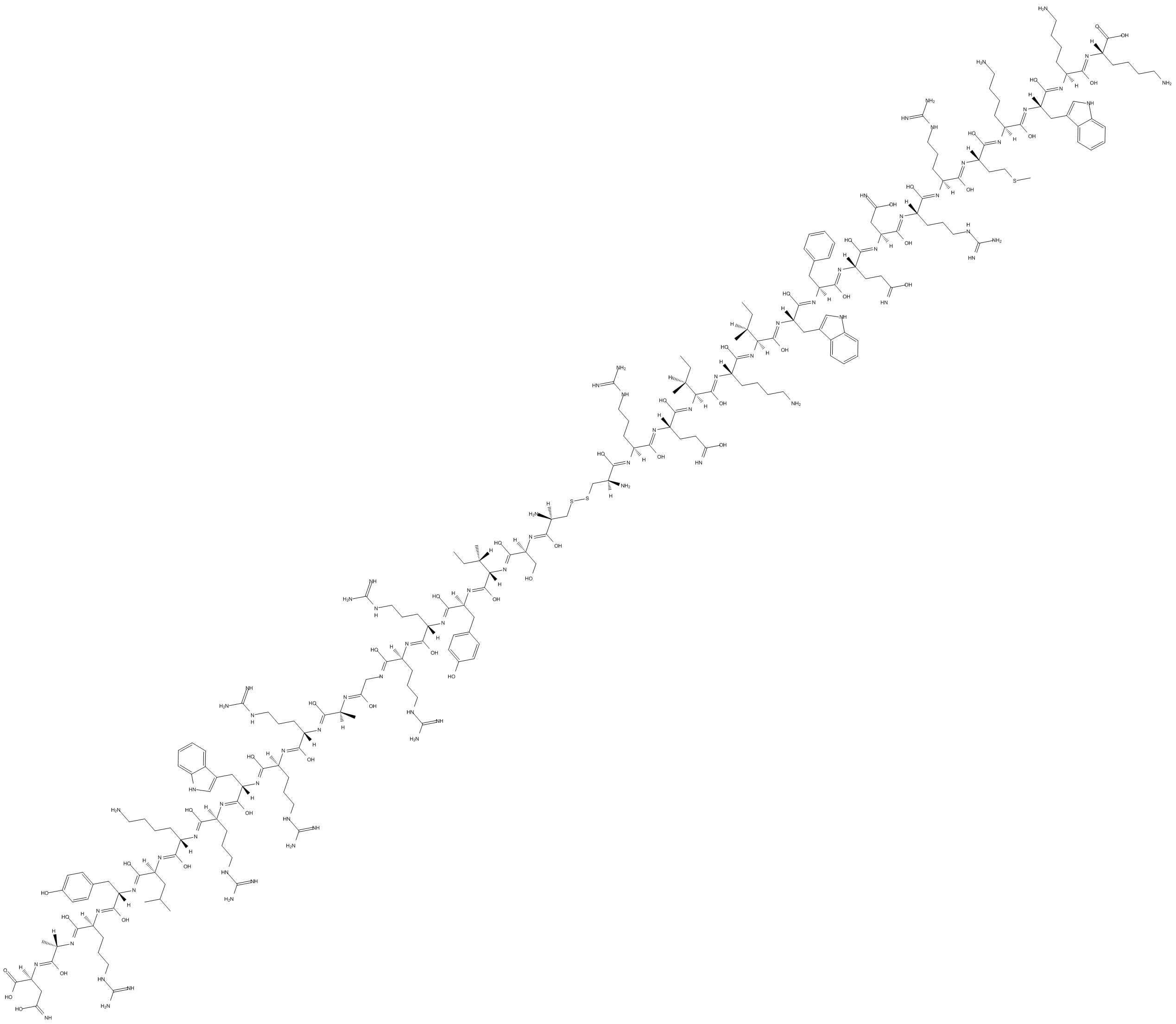
-
GC11671
PKC fragment (530-558)
Potent activator of protein kinase C
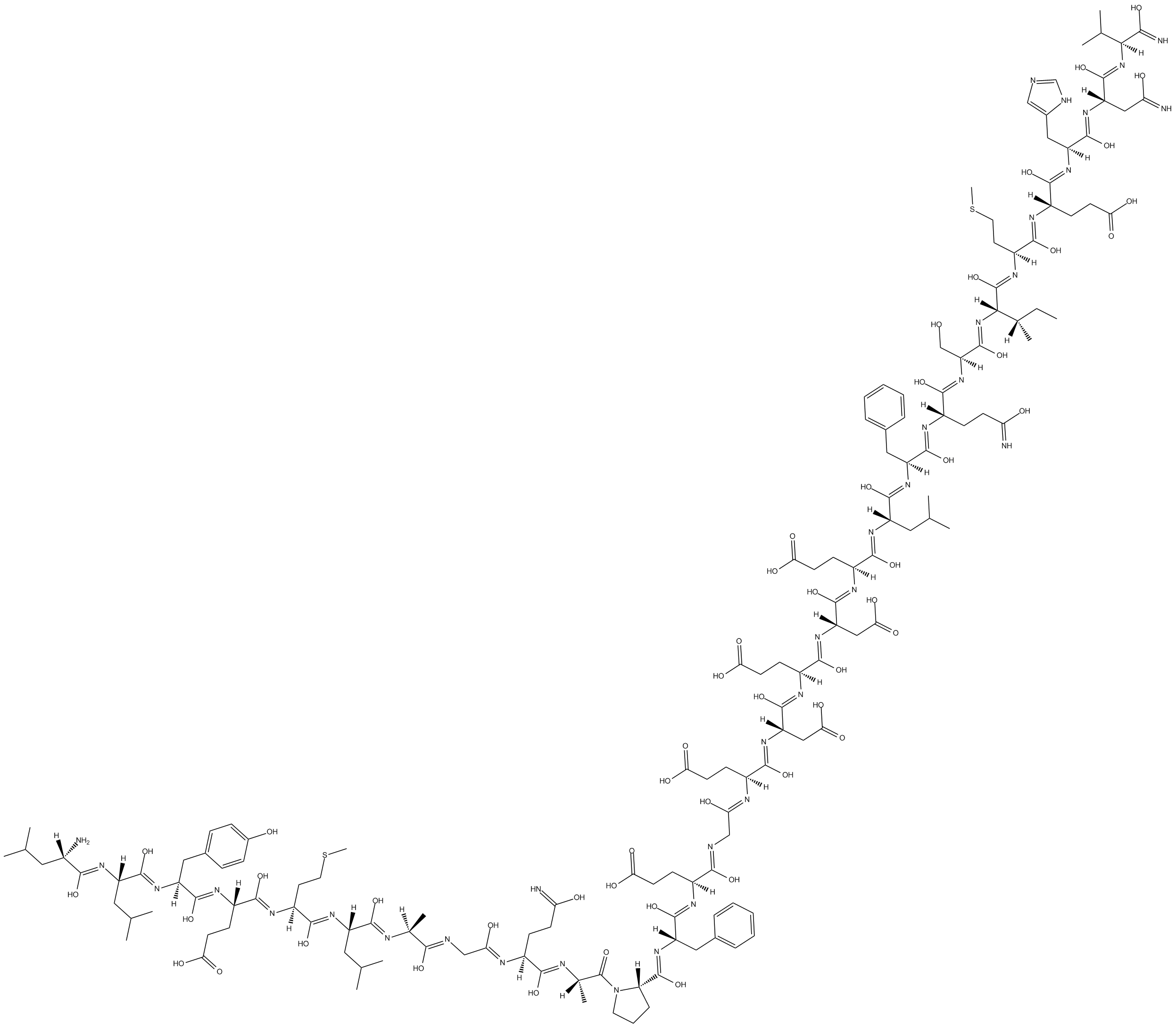
-
GC44655
PKCε Inhibitor Peptide
PKCε Inhibitorpeptid (ε-V1-2), ein von PKC&7#949; abgeleitetes Peptid, ist ein selektives PKCε Inhibitor.

-
GC31711
PKC-IN-1
PKC-IN-1 ist ein potenter, ATP-kompetitiver und reversibler Inhibitor herkÖmmlicher PKC-Enzyme mit Kis von 5,3 und 10,4 nM fÜr humane PKCβ und PKCα und IC50-Werten von 2,3, 8,1, 7,6, 25,6, 57,5, 314, 808 nM fÜr PKCα, PKCβI, PKCβII, PKCθ, PKCγ, PKC mu bzw. PKCε.
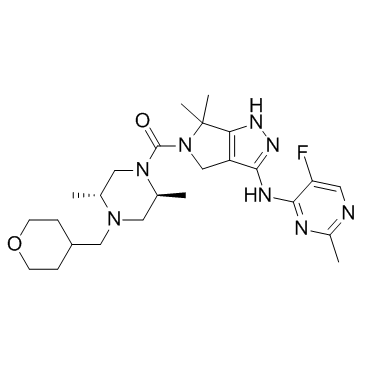
-
GC65126
PKC-iota inhibitor 1
PKC-iota-Inhibitor 1 (Verbindung 19) ist ein Proteinkinase-C-iota (PKC-Ι℩)-Inhibitor mit einem IC50-Wert von 0,34 μM.
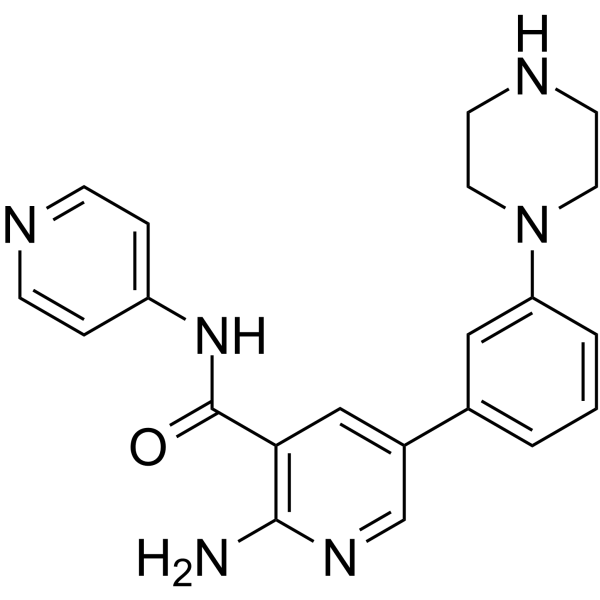
-
GC30200
PKC-theta inhibitor
Der PKC-theta-Inhibitor ist ein selektiver PKC-θ-Inhibitor mit einem IC50-Wert von 12 nM.
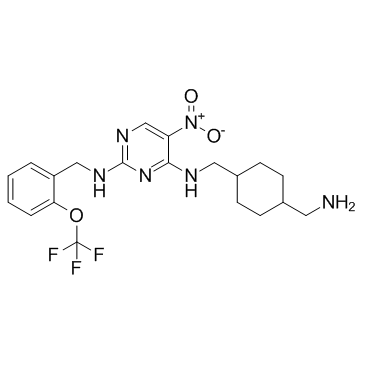
-
GC67686
PKCiota-IN-2 formic
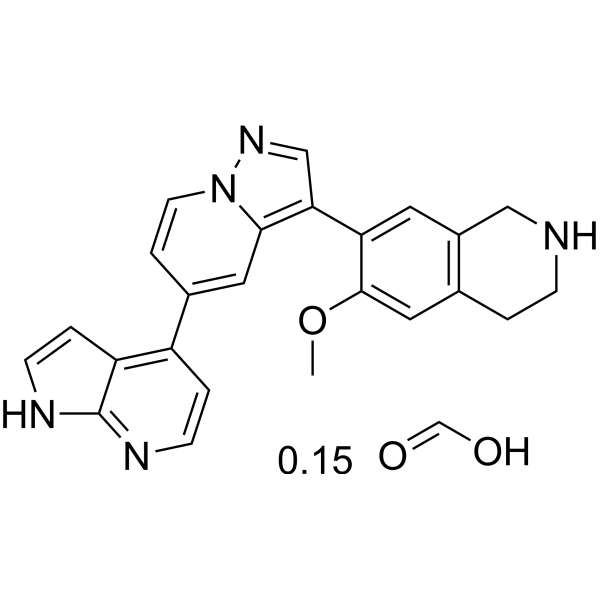
-
GC14396
Ponatinib (AP24534)
Ponatinib (AP24534) (AP24534) ist ein oral aktiver Multi-Targeting-Kinase-Inhibitor mit IC50s von 0,37 nM, 1,1 nM, 1,5 nM, 2,2 nM und 5,4 nM fÜr Abl, PDGFRα, VEGFR2, FGFR1 bzw. Src.
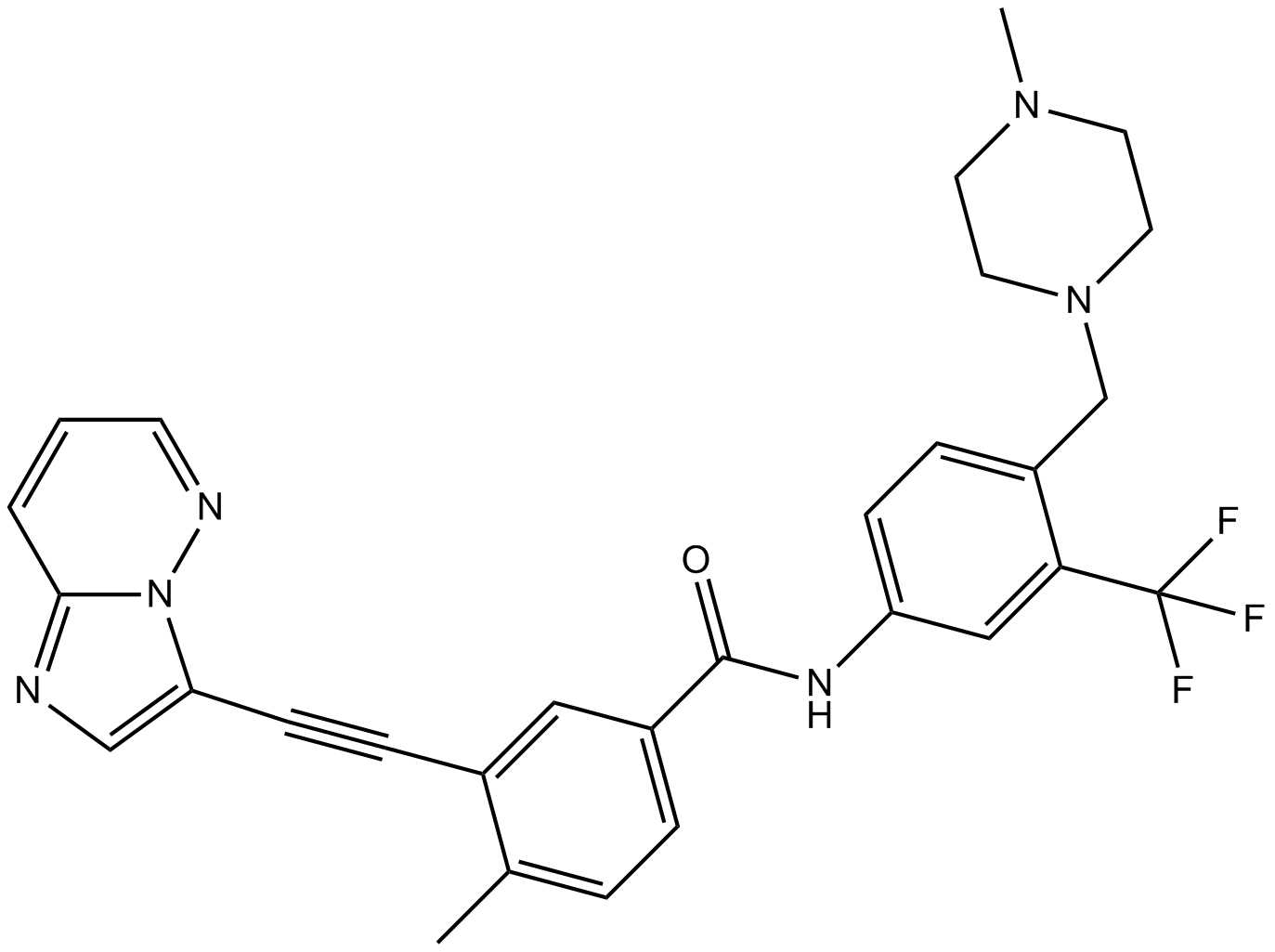
-
GC45828
Ponatinib-d8
Ponatinib D8 (AP24534 D8) ist ein mit Deuterium gekennzeichnetes Ponatinib. Ponatinib (AP24534) ist ein oral aktiver Multi-Targeting-Kinase-Inhibitor mit IC50-Werten von 0,37 nM, 1,1 nM, 1,5 nM, 2,2 nM und 5,4 nM fÜr Abl, PDGFRα, VEGFR2, FGFR1 bzw. Src.

-
GC68339
Ponsegromab
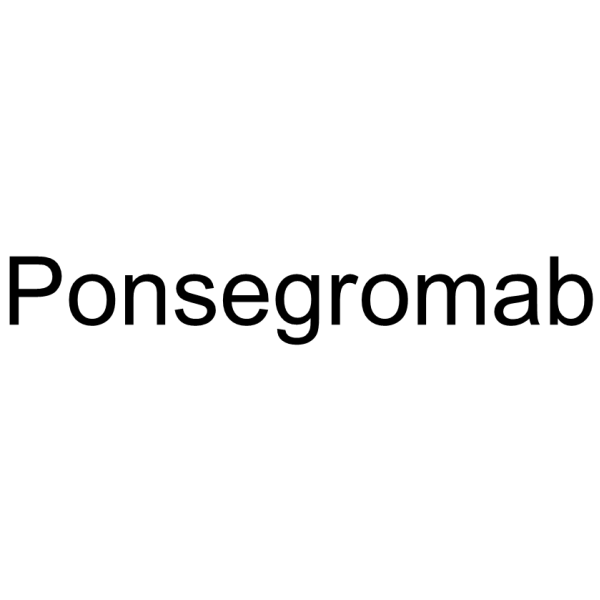
-
GC12779
PPY A
PPY A ist eine potente T315I-Mutante und ein Wildtyp-Abl-Kinasen-Inhibitor mit IC50-Werten von 9 bzw. 20 nM. PPY A hemmt Ba\u0026sup4;F3-Zellen, die mit Wildtyp-Abl und Abl-T315I-Mutant1 transformiert sind, mit IC50-Werten von 390 bzw. 180 nM. PPY A kann zur Erforschung der chronischen myeloischen Leukämie (CML) verwendet werden.
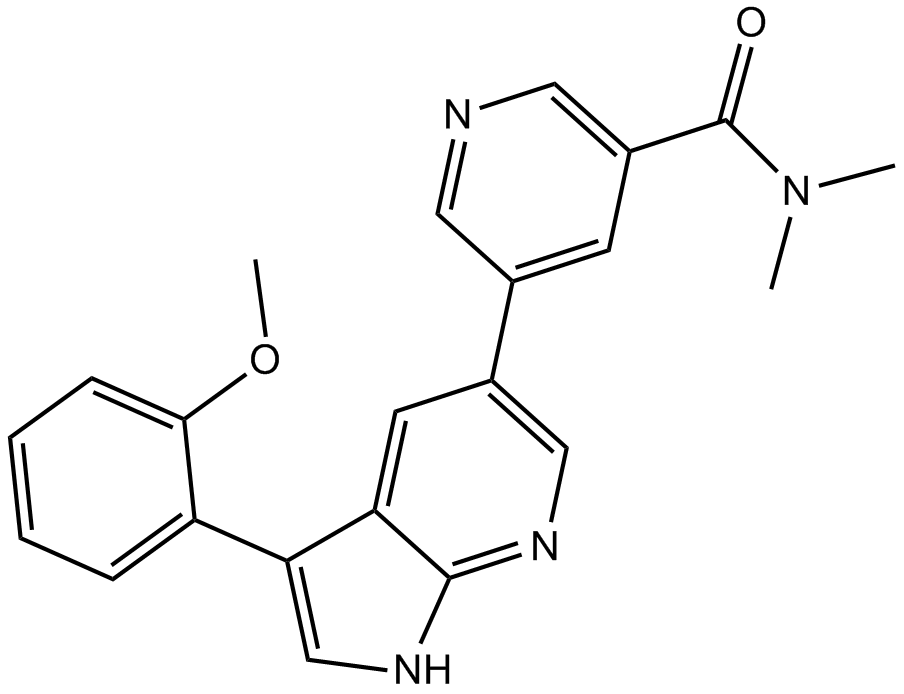
-
GC36974
Procyanidin A1
Procyanidin A1 (Proanthocyanidin A1) ist ein Procyanidin-Dimer, das die Degranulation nach der Proteinkinase-C-Aktivierung oder den Ca2+-Einstrom aus einem internen Speicher in RBL-213-Zellen hemmt.



